- 1.1 History
- 1.2 Landscape
- 1.3 Climate
- 2.1 Space Adventures
- 2.3 To the surface
- 3 Fees and permits
- 4.1 By aircraft
- 4.2 By lunar rover
- 4.3 By foot
- 5.1 Apollo landing sites
- 11 Stay safe
- 12 Stay healthy
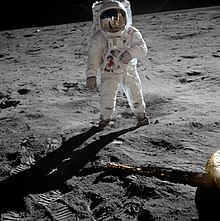
The Moon is the Earth's solitary natural satellite, roughly 384,000 km (239,000 mi) away. It has roughly 38,000,000 km 2 (15,000,000 sq mi) of surface area, and is not believed to harbor any life. The Moon is the only natural object in space outside the Earth that humans have landed on, but manned missions to the Moon ended in 1972. However, several organizations are working to get humans on the Moon again.
Did you know that you could fit every planet in the solar system (including Pluto) in between the earth and the moon?

Understand [ edit ]
History [ edit ].
The first spacecraft to land on the Moon was the Soviet Luna 2 on 13 September 1959, which had no passengers, and it simply crashed on the Moon while taking pictures. The Soviet Luna 9 was the first spacecraft to soft land (meaning that it landed on the Moon without crashing) on 3 February 1966, and Luna 10 was the first to orbit the Moon on 3 April 1966. None of the Soviet Luna program spacecraft had crews.
The United States started the Apollo program in 1967, after President John F. Kennedy made an ambitious plan in 1961 to send people to the Moon by the end of the decade - in part to distract from the Soviets beating the U.S. to the punch on virtually every space "first" up to that point. Apollo 8 was the first mission to orbit the Moon bringing famous images to millions of households in time for Christmas 1968. Then on 21 July 1969, Apollo 11 brought Neil Armstrong to become the first person to set foot on the Moon, followed 20 minutes later by Edwin "Buzz" Aldrin, fulfilling Kennedy's plan. They planted a U.S. flag and collected some rock and soil samples. All subsequent Apollo missions except for Apollo 13 successfully landed on the Moon, and all of them were crewed. Apollo 13 failed to land, and it became the best-known space accident where the astronauts actually survived. The Apollo program ended in 1972, and the last mission was Apollo 17. Meanwhile, the Soviets would end their Luna program with Luna 24 in 1976. Both the Soviet unmanned missions and the American manned missions brought back rock samples and the Americans in particular gave them to entities all around the globe as gestures of goodwill. The only other nation to return samples of lunar material to earth is China, doing so in late 2020.
Only 24 lucky souls [dead link] have ever flown to the Moon during nine American missions from 1968 to 1972. Of those 24, only 12 of them landed and walked on the Moon. All 24 were men, so the status of "first woman on the Moon" is open for the taking if you have the money and the drive. All visitors to the moon to date have been from the U.S.A., so if you're from a different country, the title of being the first from your country to land on the moon is also available to you.
Due to the fact that the Moon takes the same time to rotate around its own axis as it does to revolve around the Earth, it is always the same side of the Moon that faces Earth. On 7 October 1959, the Soviet Luna 3 became the first mission to send back images of the far side of the Moon (the side facing away from Earth). All humans who have landed on the Moon have only explored the near side, with the far side still unvisited by humans, so the status of being the first human to visit the far side of the moon is up for the taking too. On 3 January 2019, China's Chang'e 4 made the first successful soft landing on the far side of the moon, albeit unmanned.
On 23 August 2023, India's unmanned Chandrayaan-3 mission made the first successful landing near the south pole of the moon, days after Russia's Luna 25 mission failed in its attempt and crashed. This made India only the fourth country to successfully land an object on the moon, after the Soviet Union, the United States and China.
Landscape [ edit ]
The lunar landscape has features called maria (Latin for "seas", pron. MAH-ree-uh ; singular mare pron. MAH-ray ) which are large darker areas that were once mistaken by earthly observers for "lakes" and highlands. Besides that, there are a lot of impact craters as there is next to no erosion that would reduce their prominence over time. Also, the Moon has no atmosphere, so smaller asteroids will not burn up because of heat created by friction with air. Close to the poles there are "mountains of eternal sunshine" and "valleys of eternal darkness" which occupy positions that are either permanently bathed in sunlight or permanently dark. Potential future missions might use them for a reliable source of solar energy or reliable cool storage respectively and it is hoped that ice (for use as drinking water or fuel) might be found in a relatively easy-to-access way in some of the colder spots.
Climate [ edit ]
Because the Moon has no atmosphere and rotates very slowly, it experiences extreme temperature variations depending on whether or not the sun is out. The temperatures range from 127 °C (261 °F) in the Lunar days to −173 °C (−279 °F) in the Lunar nights. There are no seasons on the Moon, because the Moon's axis of rotation only tilts by about 1.5 degrees, compared to the Earth's tilt of about 23.5 degrees. Apollo astronauts' ships and spacesuits were well insulated and had internal temperature regulation systems, and so will the ships and spacesuits of your mission. In the vacuum of space it is much easier to gain heat than to get rid of it, as the only method of heat transfer available (radiative) is much less efficient than convective heat transfer.
Get in [ edit ]
The Moon has had no human visitors since the end of the Apollo program in 1972. Unmanned missions ended in 1976 ( Soviet Union , Luna 24 probe), only resuming at the end of 2013 ( China , Yutu ("Jade Rabbit") rover). As a result, only the United States has successfully landed humans on the moon. The only other countries to have successfully landed objects on the moon are the Soviet Union, China and India.
Several space agencies have proposed manned missions to the Lunar surface in the 2020s.
If you cannot get into space, you can still see the Moon from Earth; see Astronomy .
Space Adventures [ edit ]
The space tourism company Space Adventures is planning to take some people around the Moon. The plan is to first spend about ten days at the International Space Station, then a six-day journey to the moon and back. The spacecraft won't land on the Moon, instead simply looping around it and coming back to Earth. It will fly within "a few hundred kilometers" of the Moon. The time of departure and the price is still undetermined, but the price will probably be in the hundreds of millions of dollars range. Contact them if you're interested and you have the dough.
SpaceX [ edit ]
Elon Musk's SpaceX and Japanese billionaire Yusaku Maezawa are planning the #dearMoon project to take a group of six to eight artists around the Moon on a Starship , with the goal of inspiring the artists to create art about the trip when they return to Earth. The journey is tentatively planned for 2023, but the company has a history of making ambitious plans and then delaying or canceling them. This wasn't the first time they announced a tourist trip around the Moon, and the previous one didn't happen—so it remains to be seen whether they'll stick to the schedule. If the trip does happen, Maezawa, who plans to go on the trip with the artists, will become the first paying tourist to travel around the Moon. He hasn't yet decided who to bring, so if you're an artist and you want to see the Moon up close, this could be your chance. The trip will take 4–5 days, and like Space Adventures' plan above, it won't land on the Moon, instead simply looping around it and coming back to Earth. At its closest point, the spacecraft will be 200 km (120 mi) away from the Moon.
To the surface [ edit ]
As of June 2019, there are no serious plans for tourism on the surface of the Moon. All proposed missions to the Lunar surface are for professional astronauts only, and are not the type of thing where anyone could pay money to go to the Moon. Some private companies have proposed tourist trips to the lunar surface, but none of these have started serious development.
The U.S. is planning the mostly crewed Artemis program, although Artemis 1 will not be crewed, and Artemis 2 will just be a flyby. Artemis 3 is planned to launch in 2024, and all Artemis missions from Artemis 3 will be landings and colonization. NASA also planned to build a "Gateway" in Lunar Orbit where astronauts can prepare for the landing and the trip back, which will however not be used for Artemis 3 if the 2024 schedule holds.
Russia , Japan and China have all proposed crewed lunar landings in the 2030s.
Fees and permits [ edit ]
The Outer Space Treaty, which more than 100 countries have signed, states that "the activities of non-governmental entities in outer space, including the Moon and other celestial bodies, shall require authorization and continuing supervision by the appropriate State Party to the Treaty". Contact your government to ask what kind of authorization, if any, is required. In the 21st century, some countries have introduced very generous legislation for "space mining" that apply to any company headquartered in that jurisdiction and are often an attempt by countries not considered "traditional" spacefaring powers to get "a piece of the pie".
Get around [ edit ]
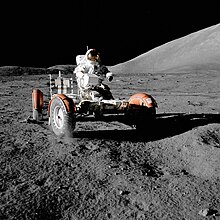
By aircraft [ edit ]
Conventional aircraft are useless on the Moon since there is no atmosphere to generate the aerodynamic lift they require to fly. Internal combustion engines have to carry around both fuel and oxidizer (air or a substitute) and there are issues with cooling in a near perfect vacuum. When you orbit the Moon, you will be in a lunar module which will give you living space and can fly without surrounding air. The lunar module can also land on the Moon.
By lunar rover [ edit ]
The primary method of transportation has been battery-powered lunar rovers , commonly known as "moon buggies", formally as Lunar Roving Vehicles (LRVs). Some lunar rovers can have passengers, such as the ones used by the last three Apollo missions. They were carried by the lunar module and never went faster than about 10 km/h (6 mph). They are still stranded at Mons Hadley, the Descartes Highland and the Taurus-Littrow valley. Whether they still are in any workable condition or can be brought into one with limited repairs is not known.
By foot [ edit ]
Gravity on the Moon's surface is only one-sixth of that on the Earth, which compensates in part for having to wear a bulky pressurized spacesuit. Most of the Apollo astronauts have "walked" in a rather peculiar half-jumping fashion that is only possible due to the lower gravity and appears to be the best form of locomotion due to the somewhat motorically limiting nature of a space-suit. You will have to learn a new way to walk, as when the Apollo astronauts tried to walk like they do on Earth, they flew up into the air and fell. Depending on the design of your space suit, falling (particularly falling backwards) can be dangerous as the life support equipment is often contained in a "rucksack" on the back of the space suit.
Future [ edit ]
Due to several considerations (lack of air, low gravity, no energy resources apart from sunlight) magnetic levitation railways have been proposed as a possible method of transportation once a moonbase (or several) is established. However, the plans for moonbases that exist are not detailed enough to include such features.
Maps [ edit ]
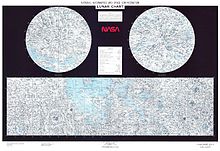
NASA's Moon Trek mapping application has extensive information, images, and tools to help you plan a mission or just learn about the Moon. Google Moon also provides a vaguely decent map of the Moon, with information and labels for past landing sites.
See [ edit ]
- Earth . Visible from only the near side of the Moon. It looks like what the Moon looks like on Earth; there are full earths, crescent earths, and new earths! However, contrary to popular misconceptions, if you don't move you will only ever see the Earth in the same place and no such thing as an "earthrise". But if you are orbiting the Moon, you'll see the Earth rise and set when you cross the border between the Near and Far sides of the Moon. The landscape of Earth changes, as clouds drift around – and as the Earth rotates. ( updated Jun 2019 )
- Dark Side of the Moon . Visit the part of the Moon that is not visible from the Earth. However, it is said "there is no dark side in the Moon, really. As a matter of fact it's all dark". The real truth is that any spot (except near the poles) is lit half the time: the same time a spot facing Earth is dark. During a full moon on Earth the entire Dark Side is dark, and during a new moon all of it is lit. We have satellite images, but only the Apollo astronauts who circled the Moon have ever seen it with their own eyes. Only one mission has ever landed or attempted to land there, the 2019 unmanned Chinese mission Chang'e 4, which required a relay satellite to be launched first to keep the contact with Earth. And, for some strange reason, there are much fewer maria (in case you don't remember it, the big dark areas) on the Dark Side of the Moon. ( updated Jun 2019 )
- Solar eclipse . The astronauts of Apollo 12 had seen and photographed it. When you see a solar eclipse on the Earth, it's because the Moon is directly in front of the Sun. But on the Moon, it's because the Earth is directly in front of the Sun. ( updated Jun 2019 )
- Lunar south pole . The south pole is where most of the Moon's water is believed to be, mostly in the form of ice. The first successful landing near the south pole was made by India's Chandrayaan-3 mission in 2023. ( updated Aug 2023 )
Apollo landing sites [ edit ]
- Mare Tranquillitatis ( Apollo 11 Landing Site ), The Sea of Tranquility ( near Sabine and Ritter craters ). The location of the first manned Moon landing. On July 21, 1969, NASA astronauts Neil A. Armstrong and Edwin "Buzz" E. Aldrin set foot on the Moon to become the first humans to ever touch another celestial body. Look for the American flag that was knocked over by the exhaust of the departing ascent stage of Eagle , the lunar lander, and the television camera left behind. Try not to disturb the footprints in the soil — due to the lack of an atmosphere and erosion, the footprints will likely remain as they are, completely undisturbed, for millions of years to come. Lastly, try to find the plaque on the remaining descent stage of the lunar lander, which contains the names and signatures of the crew of Apollo 11, then–U.S. President Richard Nixon, and a message commemorating the location as being where the first landing took place. ( updated Jun 2019 )
- Oceanus Procellarum ( Apollo 12 Landing Site ) ( southeast of the Montes Riphaeus ). The location of the second manned Moon landing, Oceanus Procellarum (the Ocean of Storms) is also the location of the Surveyor 3 unmanned space probe, the only space probe to have landed on another planet and had parts of it returned to the Earth. This is the only mare to be called an ocean, because of its enormous size covering over 10 percent of the Moon's total area. To be exact, the Apollo 12 landed in the Mare Cognitus which is inside the Oceanus Procellarum. Like all other Apollo missions, Apollo 12 left a plaque, so try to find it! ( updated Jun 2019 )
- Fra Mauro Highlands ( Apollo 14 Landing Site ). The location of the third manned Moon landing, the Fra Mauro Highlands contain the massive, 80-km-diameter crater of the same name within. This was the intended landing site for Apollo 13, but since it didn't land, Apollo 14 landed here. Also the location of Alan Shepard's impromptu golf excursion, if you're one for putting. ( updated Jun 2019 )
- Hadley Rille ( Apollo 15 Landing Site ). The location of the fourth manned Moon landing, the Hadley Rille is located within an expanse of the Mare Imbrium (Sea of Rains) known as the Palus Putredinus (Marsh of Decay). A rille is a geographical feature on the Moon which looks like canyons or canals. The location of the first Lunar Roving Vehicle (the Lunar Rover for short) is here. Also the location of the Fallen Astronaut , a small plaque and aluminum sculpture, placed face down in the regolith by the crew of Apollo 15, that commemorates the 8 American astronauts and 6 Soviet cosmonauts who had lost their lives up to late July/August 1971. ( updated Jun 2019 )
- Descartes Highlands ( Apollo 16 Landing Site ). The location of the fifth manned Moon landing and the second of the three Lunar Roving Vehicles. Look for large rocks to take home; this was the site where the largest rock returned by the Apollo missions, nicknamed "Big Muley", was found. Also, look for "House Rock", a massive formation taller than a four-story building, in the vicinity of the landing site. Lastly, look for the family photo of astronaut Charlie Duke that he left behind on the surface. ( updated Jun 2019 )
- Taurus-Littrow ( Apollo 17 Landing Site ). The location of the sixth and (thus far) final manned Moon landing, Taurus-Littrow is a massive valley located in the Mare Serenitatis (Sea of Serenity), and named for the nearby Taurus range of lunar peaks and the Littrow crater. Look for the famed orange volcanic soil that was discovered on the Moon here, and the third and final Lunar Roving Vehicle. Also, look for "TDC" etched into the lunar regolith by Gene Cernan in honor of his then-nine-year-old daughter, Tracy. As with everything else on the Moon, this will likely last for millions of years due to the lack of erosion and atmosphere. ( updated Jun 2019 )
Do [ edit ]

- "That's one small step for [a] man, one giant leap for mankind." — Neil Armstrong, Apollo 11
- "Whoopie! Man, that may have been a small one for Neil, but that's a long one for me." — Pete Conrad, Apollo 12. Conrad was significantly shorter than Neil Armstrong.
- "And it's been a long way, but we're here." — Alan Shepard, Apollo 14
- "As I stand out here in the wonders of the unknown at Hadley, I sort of realize there's a fundamental truth to our nature. Man must explore. And this is exploration at its greatest." — David Scott, Apollo 15
- "There you are: Mysterious and Unknown Descartes. Highland plains. Apollo 16 is gonna change your image. I'm sure glad they got ol' Brer Rabbit, here, back in the briar patch where he belongs." — John Young, Apollo 16
- "Hey, who's been tracking up my Lunar surface?" — Harrison Schmitt, Apollo 17, the first and only professional scientist sent to the Moon on an Apollo mission
- Rock collecting is the most obvious hobby, and it's easy to do since the Moon is one giant rock. Dust collecting is also a favorite among tourists.
- Plant your nation's flag on the lunar surface. Be sure to take plenty of photographs to show to the folks back home.
- Play golf. There are no established golf courses available, but the Moon does provide you with an excellent opportunity to practice your sand trap shots. Apollo astronauts had played golf on the Moon, really. Another cool thing is, golf balls would fly 6 times as far as they do on Earth, because of the lower gravity.
- The moonwalk. Could be tricky in a spacesuit, but there is no better place to do it.
- Have fun jumping around with the low gravity. You can jump 2 m (6.6 ft) high!
- Take lots of pictures. Make sure you use a specially designed camera that can be operated with the bulky gloves that are usually part of a space-suit.
- Astronomy on the Moon is most likely great. While you can't see any stars in broad daylight on the Moon either, the lack of atmosphere means no twinkling and no obstructions and given that there is no artificial light or radio interference from Earth, there have been serious proposals to establish an observatory on the back side of the Moon.
Buy [ edit ]
There are no shops of any sort on the Moon, so all supplies must be brought. Moon rocks would be a nice souvenir to take home, but if tourism ever gets common there might have to be regulation à la leave no trace camping .
Eat [ edit ]
While ancient legends on Earth report the reflection of the Moon to appear as a wheel of green cheese , its soil is not edible. There are no restaurants or shops available on the Moon, no food service amenities and no moon pies. Take all the food you need with you. Astronaut food has been called incredibly bland, but then again so has airline food.
Drink [ edit ]
There is some amount of water across much of the surface of the Moon in the form of ice, but it is unclear how easy it is to access.
Thus far, all manned missions have brought their needed water with them. The modern International Space Station has some water reclamation capability, but missions in the Apollo era did not. Due to its weight, water is expensive and costly to transport but there is no viable alternative. Any long term stay will have to rely on recycling water in some fashion.
Sleep [ edit ]

The next phase of lunar exploration will probably involve the construction of permanent manned bases in the Moon's polar regions. In the meantime accommodation is limited to what you bring. The lunar landers of the Apollo program have all been equipped to be used for sleeping, so chances are that you'll be sleeping in whatever you landed in.
Because of the sunlight, there may be some difficulties going to bed. Apollo astronauts slept and woke on command, using the time zone of their departure place.
Stay safe [ edit ]
The Moon is subject to international law under the Outer Space Treaty and the Moon Treaty (although none of the major space-faring nations have ratified the latter, so its applicability is questionable). Among other things, the Outer Space Treaty puts the responsibility of any man-made object with the state that launched it (a malfunctioning Soviet satellite named Kosmos 954 spread radioactive material all over northern Canada in 1978, for which the Soviet government eventually paid CAD3 million), so check with the laws of the government where you will be launched from.
Space however is generally inhospitable and this will become all too apparent once you leave the comforts of Earth. In addition to the obvious problems of freezing cold temperatures and the lack of a breathable atmosphere, in order to stay alive you will have to take precautions against:
- Solar storms and cosmic rays ( there is no magnetic field to deflect these high energy particles )
- Meteor impacts ( there is no atmosphere to burn them before they impact the surface )
Bear in mind that the temperatures also go well below freezing if you are not in direct sunlight. If you are, you run the risk of skin cancer. Luckily, spacesuits can protect you from extreme temperatures and will give you air.
Stay healthy [ edit ]
There are no hospitals or emergency medical facilities on the Moon and communication with emergency services on the Earth are slow. Oxygen deficiency may also be a problem. However, there are no native infectious diseases on the Moon and neither are there pests , such as mosquitoes or tour touts. Make sure you maintain strict hygiene with everything you bring to keep it that way. If any medical emergency does arise, the nearest substantial healthcare provider is at least 3 days away – and you have to go to them, they aren't coming to you.
Connect [ edit ]
Communications back to Earth, as deployed for the Apollo missions, are primitive but usable. Slow-scan television (SSTV) lunar transmissions must share communication bandwidth with telemetry data. Image data from the five Lunar Orbiter spacecraft is transmitted to Earth stations "M" ( Madrid , Spain ), "W" ( Woomera , Australia ) and "G" (Goldstone, California ) and logged to tape. As real-time conversions from SSTV format for live broadcast on Earth were little more than primitive screenshots, by the time that the July 21, 1969, moonwalk gets uploaded to YouTube substantial losses in image quality are visible.
Transmission from lunar rover via a Command Service Module in lunar orbit to Earth is infeasible for visitors to the lunar poles or the dark side of the Moon, as line-of-sight transmission to Earth is simply not available. A 2008 NASA proposal advocates lunar-orbiting satellites as a workaround but no system has been deployed. The Chinese Chang'e 4 mission, which has made the only soft landing on the far side of the Moon to date, uses a satellite orbiting around the Earth-Moon L 2 point to relay signals between its Yutu 2 lunar rover and Earth. If a lunar base on the remote side ever gets built (perhaps for astronomy?) there might be an incentive to transmit the signal via cable (preferably built from lunar material) to the near side and only then send it to earth via antenna. While this would be a lot more expensive and difficult than a relay satellite at the L 2 point, it would eliminate possible interference with astronomical observations and give an increased bandwidth.
A postmark exists for "United States on the Moon", a rare one-of-a-kind collector item. A matching pair of 8¢ stamps were issued by USPS with captions "United States in Space", "A decade of achievement". The mail pouch is stored under Apollo 15 commander David Scott's seat on the lunar rover, last seen around Hadley Rille on August 2, 1971. Be sure to send or bring back a few moondust-covered postcards as souvenirs.
Plans for establishing a 4G network by 2019 are in place. Yes, really! It's being launched in order to allow lunar exploration vehicles to communicate with each other, and to transmit HD video of the Moon's surface back to Earth.
No matter what happens, to communicate between the Moon and the Earth, you will always have a delay of about 3 seconds. That's because nothing can go faster than light, so the signals that you send will go for about 1.5 seconds until it gets to the Earth, and when Earth responds, the signal will go for another about 1.5 seconds until it gets back to the Moon.
Go next [ edit ]
- Earth , how can you live without it? (for now)
- Space . Due to the lower gravity the Moon has been considered a good starting point for exploration beyond as the amount of fuel to get an amount of payload into orbit is lower than from Earth's surface.
- Has custom banner
- Articles with dead external links
- Has map markers
- Topic articles
- Usable topics
- Usable articles
Navigation menu
- History Classics
- Your Profile
- Find History on Facebook (Opens in a new window)
- Find History on Twitter (Opens in a new window)
- Find History on YouTube (Opens in a new window)
- Find History on Instagram (Opens in a new window)
- Find History on TikTok (Opens in a new window)
- This Day In History
- History Podcasts
- History Vault
1969 Moon Landing
By: History.com Editors
Updated: July 17, 2023 | Original: August 23, 2018

On July 20, 1969, American astronauts Neil Armstrong (1930-2012) and Edwin "Buzz" Aldrin (1930-) became the first humans ever to land on the moon. About six-and-a-half hours later, Armstrong became the first person to walk on the moon. As he took his first step, Armstrong famously said, "That's one small step for man, one giant leap for mankind." The Apollo 11 mission occurred eight years after President John F. Kennedy (1917-1963) announced a national goal of landing a man on the moon by the end of the 1960s. Apollo 17, the final manned moon mission, took place in 1972.
JFK's Pledge Leads to Start of Apollo Program
The American effort to send astronauts to the moon had its origins in an appeal President Kennedy made to a special joint session of Congress on May 25, 1961: "I believe this nation should commit itself to achieving the goal, before this decade is out, of landing a man on the moon and returning him safely to Earth."
At the time, the United States was still trailing the Soviet Union in space developments, and Cold War -era America welcomed Kennedy's bold proposal. In 1966, after five years of work by an international team of scientists and engineers, the National Aeronautics and Space Administration (NASA) conducted the first unmanned Apollo mission , testing the structural integrity of the proposed launch vehicle and spacecraft combination.
Then, on January 27, 1967, tragedy struck at Kennedy Space Center in Cape Canaveral, Florida, when a fire broke out during a manned launch-pad test of the Apollo spacecraft and Saturn rocket. Three astronauts were killed in the fire.
President Richard Nixon spoke with Armstrong and Aldrin via a telephone radio transmission shortly after they planted the American flag on the lunar surface. Nixon considered it the "most historic phone call ever made from the White House."
Despite the setback, NASA and its thousands of employees forged ahead, and in October 1968, Apollo 7, the first manned Apollo mission, orbited Earth and successfully tested many of the sophisticated systems needed to conduct a moon journey and landing.
In December of the same year, Apollo 8 took three astronauts to the far side of the moon and back, and in March 1969 Apollo 9 tested the lunar module for the first time while in Earth orbit. That May, the three astronauts of Apollo 10 took the first complete Apollo spacecraft around the moon in a dry run for the scheduled July landing mission.
Timeline of the 1969 Moon Landing
At 9:32 a.m. EDT on July 16, with the world watching, Apollo 11 took off from Kennedy Space Center with astronauts Neil Armstrong, Buzz Aldrin and Michael Collins (1930-) aboard. Armstrong, a 38-year-old civilian research pilot, was the commander of the mission.
After traveling 240,000 miles in 76 hours, Apollo 11 entered into a lunar orbit on July 19. The next day, at 1:46 p.m., the lunar module Eagle, manned by Armstrong and Aldrin, separated from the command module, where Collins remained. Two hours later, the Eagle began its descent to the lunar surface, and at 4:17 p.m. the craft touched down on the southwestern edge of the Sea of Tranquility. Armstrong immediately radioed to Mission Control in Houston, Texas, a now-famous message: "The Eagle has landed."
At 10:39 p.m., five hours ahead of the original schedule, Armstrong opened the hatch of the lunar module. As he made his way down the module's ladder, a television camera attached to the craft recorded his progress and beamed the signal back to Earth, where hundreds of millions watched in great anticipation.
At 10:56 p.m., as Armstrong stepped off the ladder and planted his foot on the moon’s powdery surface, he spoke his famous quote, which he later contended was slightly garbled by his microphone and meant to be "that's one small step for a man, one giant leap for mankind."
Aldrin joined him on the moon's surface 19 minutes later, and together they took photographs of the terrain, planted a U.S. flag, ran a few simple scientific tests and spoke with President Richard Nixon (1913-94) via Houston.
By 1:11 a.m. on July 21, both astronauts were back in the lunar module and the hatch was closed. The two men slept that night on the surface of the moon, and at 1:54 p.m. the Eagle began its ascent back to the command module. Among the items left on the surface of the moon was a plaque that read: "Here men from the planet Earth first set foot on the moon—July 1969 A.D.—We came in peace for all mankind."
At 5:35 p.m., Armstrong and Aldrin successfully docked and rejoined Collins, and at 12:56 a.m. on July 22 Apollo 11 began its journey home, safely splashing down in the Pacific Ocean at 12:50 p.m. on July 24.
How Many Times Did the US Land on the Moon?
There would be five more successful lunar landing missions, and one unplanned lunar swing-by. Apollo 13 had to abort its lunar landing due to technical difficulties. The last men to walk on the moon, astronauts Eugene Cernan (1934-2017) and Harrison Schmitt (1935-) of the Apollo 17 mission, left the lunar surface on December 14, 1972.
The Apollo program was a costly and labor-intensive endeavor, involving an estimated 400,000 engineers, technicians and scientists, and costing $24 billion (close to $100 billion in today's dollars). The expense was justified by Kennedy's 1961 mandate to beat the Soviets to the moon, and after the feat was accomplished, ongoing missions lost their viability.
Apollo 11 Photos
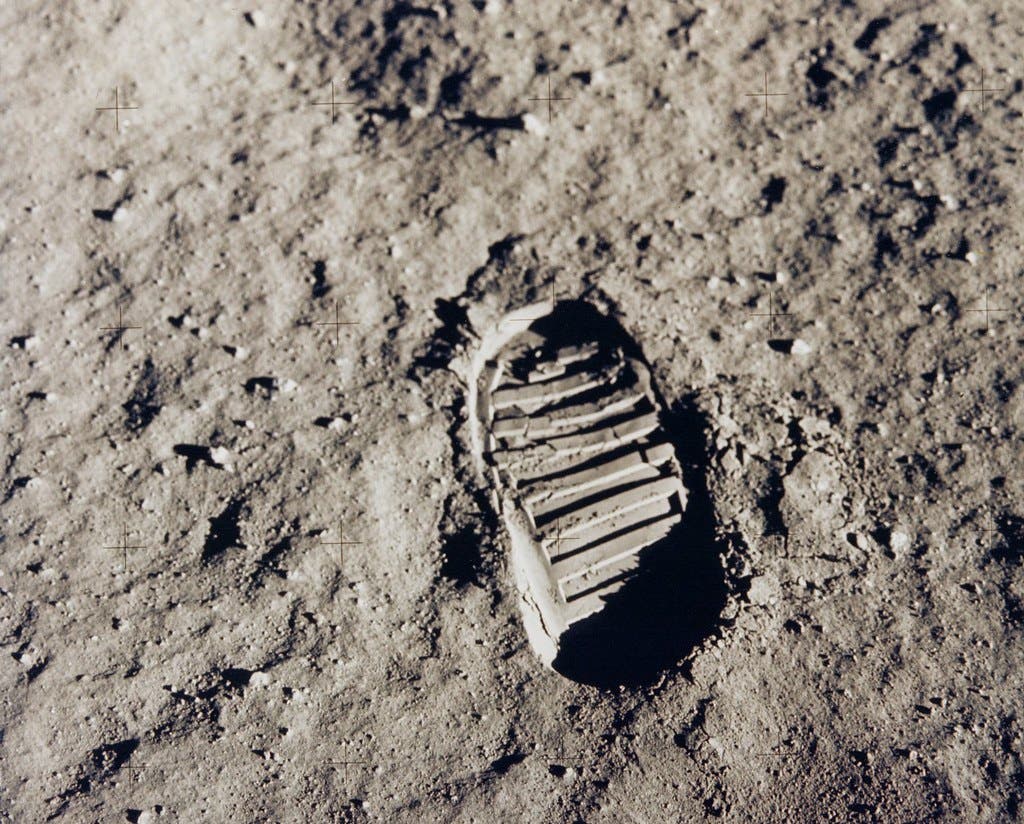
HISTORY Vault: Moon Landing: The Lost Tapes
On the 50th anniversary of the historic moon landing, this documentary unearths lost tapes of the Apollo 11 astronauts, and explores the dangers and challenges of the mission to the moon.

Sign up for Inside History
Get HISTORY’s most fascinating stories delivered to your inbox three times a week.
By submitting your information, you agree to receive emails from HISTORY and A+E Networks. You can opt out at any time. You must be 16 years or older and a resident of the United States.
More details : Privacy Notice | Terms of Use | Contact Us
We have completed maintenance on Astronomy.com and action may be required on your account. Learn More

- Login/Register
- Solar System
- Exotic Objects
- Upcoming Events
- Deep-Sky Objects
- Observing Basics
- Telescopes and Equipment
- Astrophotography
- Space Exploration
- Human Spaceflight
- Robotic Spaceflight
- The Magazine
Meet the four astronauts who will soon take a trip to the Moon
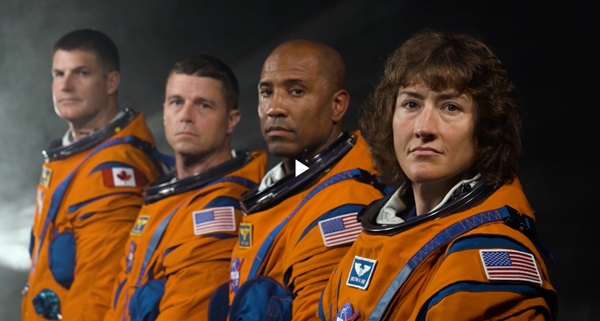
NASA has selected the four astronauts that will travel to the Moon during the upcoming Artemis 2 mission, which will be humanity’s first crewed return to the Moon in more than 50 years.
The four astronauts are: Reid Wiseman, Victor Glover, and Christina Koch of NASA, and Jeremy Hansen of the Canadian Space Agency.
“The Artemis 2 crew represents thousands of people working tirelessly to bring us to the stars,” said NASA Administrator Bill Nelson before announcing the crew during a live event broadcast on NASA TV . “This is their crew. This is our crew. This is humanity’s crew.”
Get to know the Artemis 2 crew
Reid wiseman (commander):.
Formerly NASA’s chief astronaut, Wiseman is a 47-year-old captain in the U.S. Navy that was selected to be an astronaut in 2009. In 2014, he spent 165 days aboard the International Space Station . During this time, Wiseman undertook two spacewalks and helped carry out more than 300 scientific experiments in areas ranging from human physiology to medicine to Earth science to astrophysics. During that stretch, Wiseman and his team also set a record by completing 82 hours of research in a single week.
Victor Glover (Pilot):
A 46-year-old captain in the U.S. Navy, Glover was selected to be an astronaut in 2013. In November 2020, he served as pilot of the first operational mission of the SpaceX Crew Dragon capsule , spending 168 days on the International Space Station. Glover was also the first black man to be assigned to a space station crew and has carried out four total spacewalks. Some colleagues call Glover “Ike,” a nickname that one of his first commanding officers jokingly gave him. It stands for “I know everything. ”
Christina Koch (Mission Specialist):
Previously an electrical engineer at NASA’s Goddard Space Flight Center in Maryland, Koch was selected to be an astronaut in 2013. At 44 years old, Koch has carried out six spacewalks totaling more than 42 hours. She also currently holds the record for the longest single spaceflight by a woman , which she set while staying aboard the International Space Station for a whopping 328 days straight.
Jeremy Hansen (Mission Specialist):
One of four active Canadian astronauts, Hansen is a 47-year-old former fighter pilot. He was selected to be an astronaut by the Canadian Space Agency (CSA) in 2009, but he has yet to fly to space. During his time representing the CSA at NASA, Hansen has served as a capsule communicator, relaying information between mission control in Houston and astronauts aboard the International Space Station.
The Artemis 2 crew was selected by NASA’s Director of Flight Operations, Norm Night, and NASA’s Chief Astronaut, Joe Acabá, under the supervision of Johnson Space Center Director Vanessa Wyche.
Humanity returns to the Moon
The Artemis 2 mission, slated for launch in 2024, will not see humans return to the Moon’s surface. Instead, the crew will take a trip around the Moon, testing the technologies required to eventually land humans on the lunar surface during Artemis 3.
“Artemis 1 was a resounding success,” said Night. “And Artemis 2 will leverage that by putting humans in the loop, executing operations in the critical path leading to new footprints on the lunar surface.”
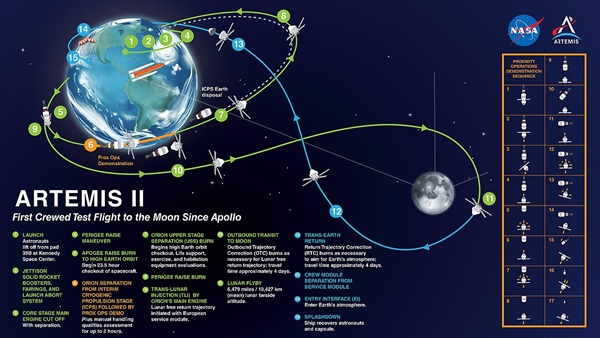
“[Artemis 2] is a mission that is significant in many ways,” said Nelson. “It’s a demonstration of our ability to push the boundaries of human achievement. It’s a testament to the unwavering passion of the team that will make it possible. And it’s a message to the world: We choose to go back to the Moon and then onto Mars, and we’re going to do it together, because in the 21st century, NASA explores the cosmos with international partners.”
In total, the Artemis 2 mission to the Moon and back will take about 10 days to complete. And once the crew-carrying Orion spacecraft makes its way back, it will reenter Earth’s atmosphere at a blistering 30 times the speed of sound before splashing down in the Pacific Ocean.
“The Moon is a symbol of our can-do spirit,” said Nelson. “And over the course of the Artemis missions, the first woman and the first person of color will take giant leaps on the lunar surface. It’s been more than a half-century since astronauts journeyed to the Moon. Well folks, that’s about to change.”
Along with members of the press and many elected officials, including Texas Senator Ted Cruz, several surviving Apollo astronauts were also present at the event.
“We’ve made many giant leaps in the past 60 years, fulfilling President Kennedy’s goal of landing a person on the Moon,” said Wyche. “And today, we stand on the shoulders of giants as we reach further into the stars and push forward to the Moon once again — and on to Mars.”
“We will show what is possible when we dare to reach,” said Nelson.

Meet Katya Echazarreta, the first Mexican-born woman to travel to space

A metal chunk that burst through a Florida home came from the ISS

An updated list of space missions: Current and upcoming voyages

NASA bids farewell to the Ingenuity Mars Helicopter with new photos

NASA is taking astronaut applications. Here’s how to apply

It’s hard to grow food in space. These sensors can help.
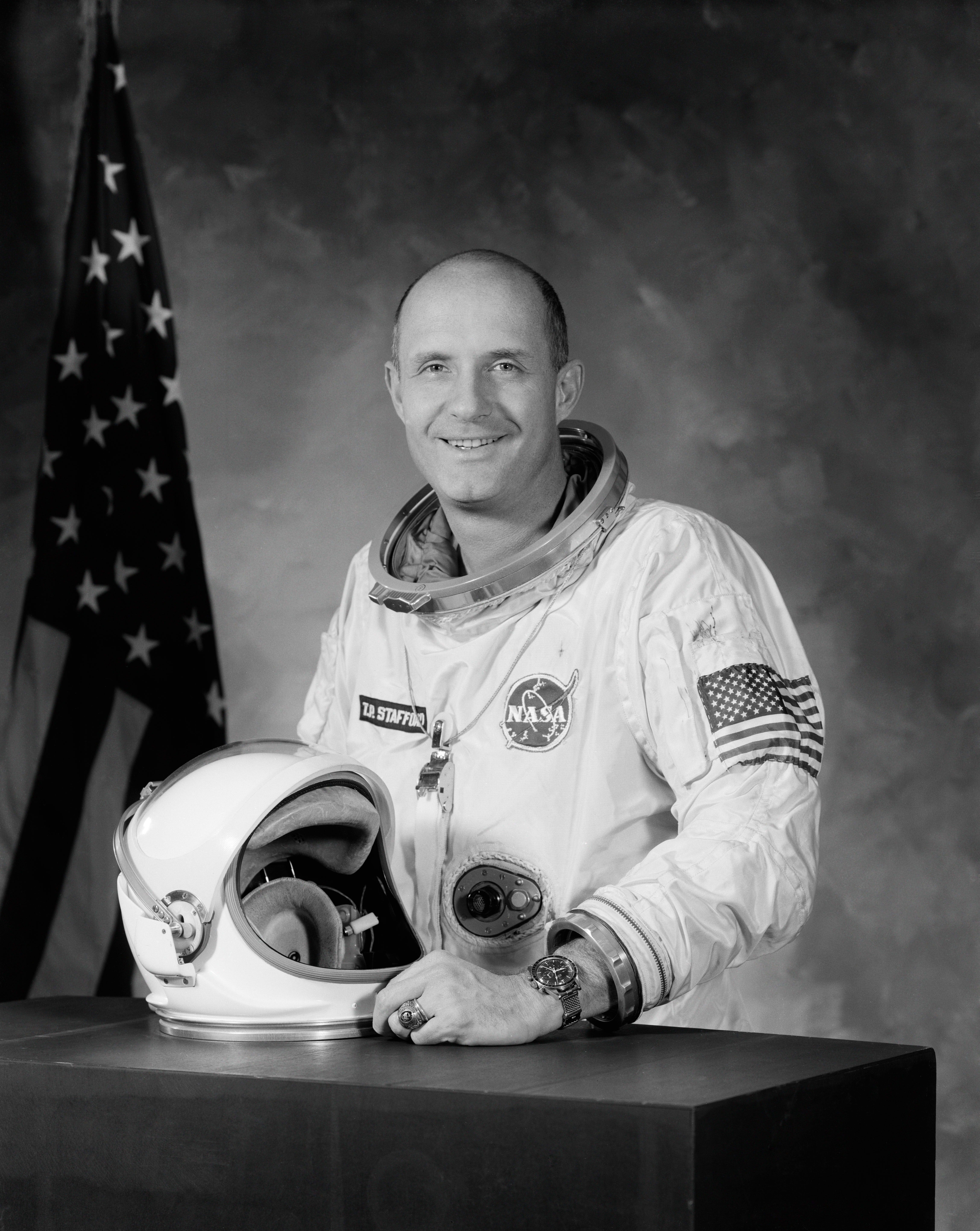
Remembering Tom Stafford, the Apollo commander who did his part to thaw the Cold War
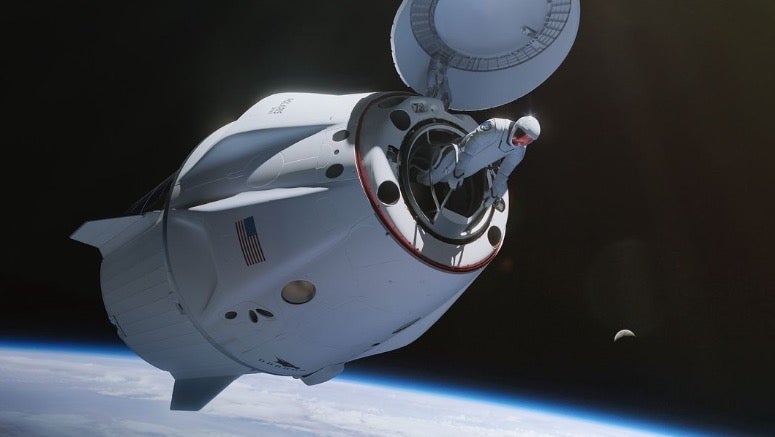
The upgrades to spacesuits that need to be made sooner rather than later
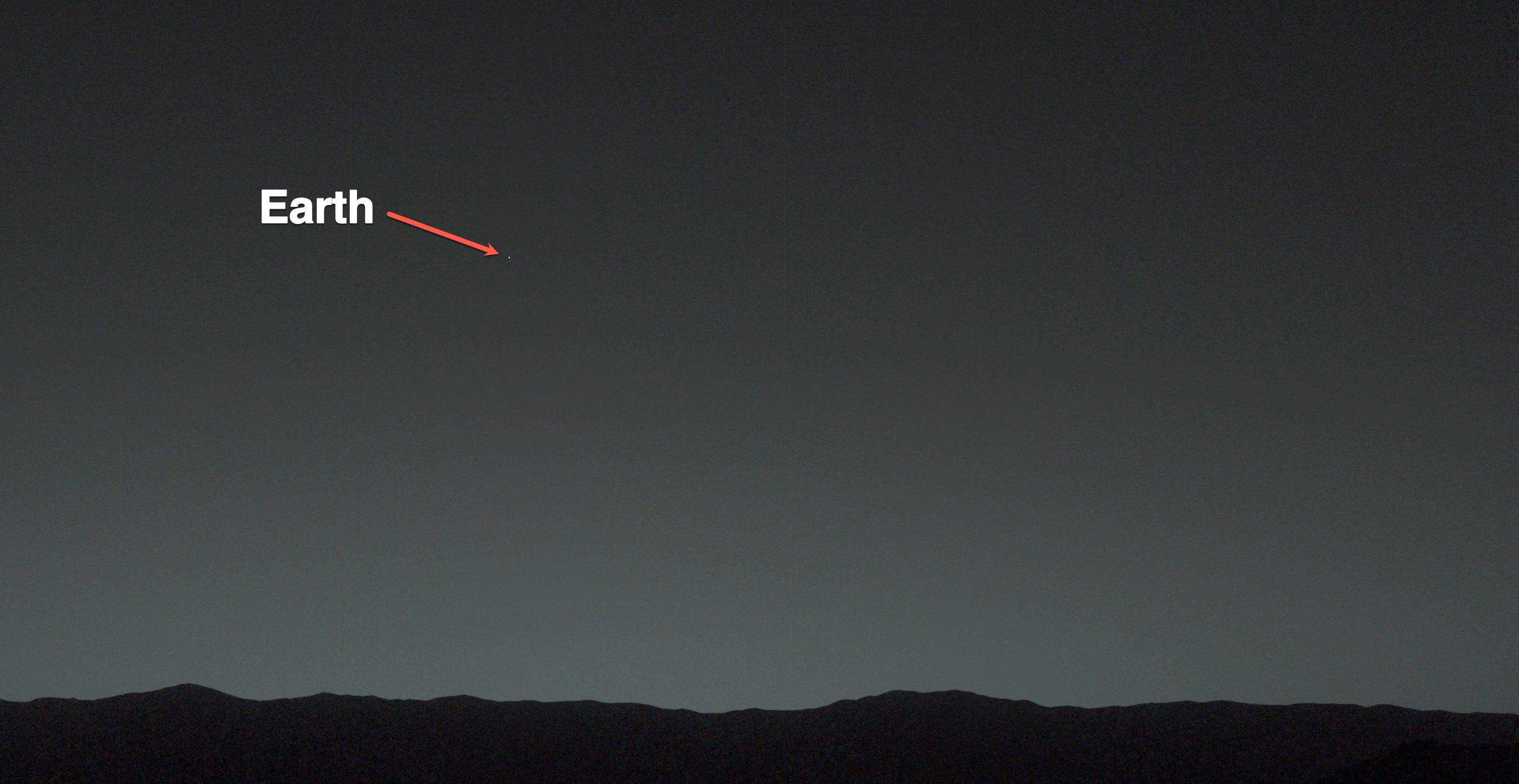
Isolation and annoying co-workers: Solving the stress of a trip to Mars

From lighting up our skies to maintaining a geological record of our solar system’s history, Earth’s closest celestial neighbor plays a pivotal role in the studies of our planet and our solar system.
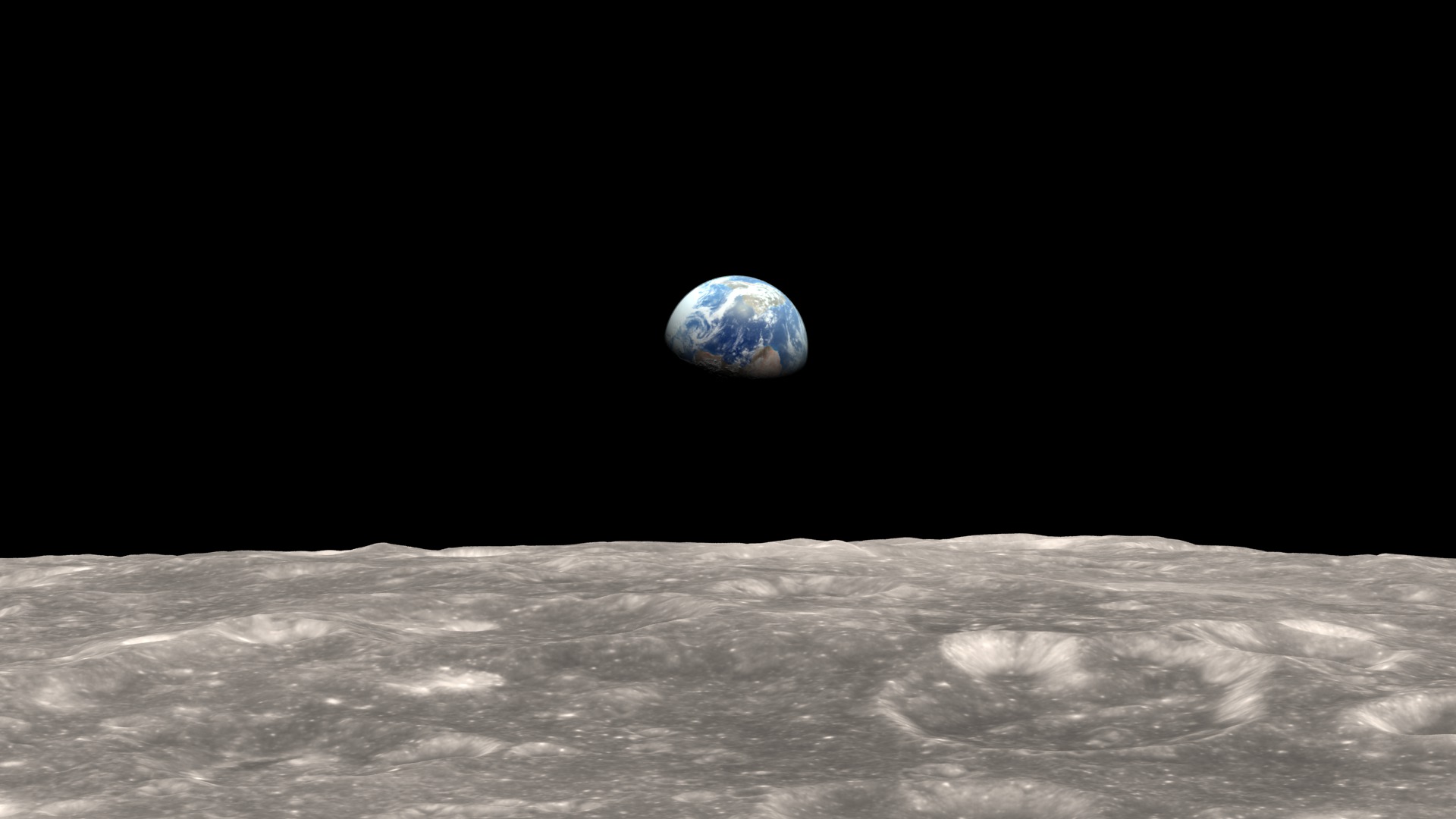
About earth's moon
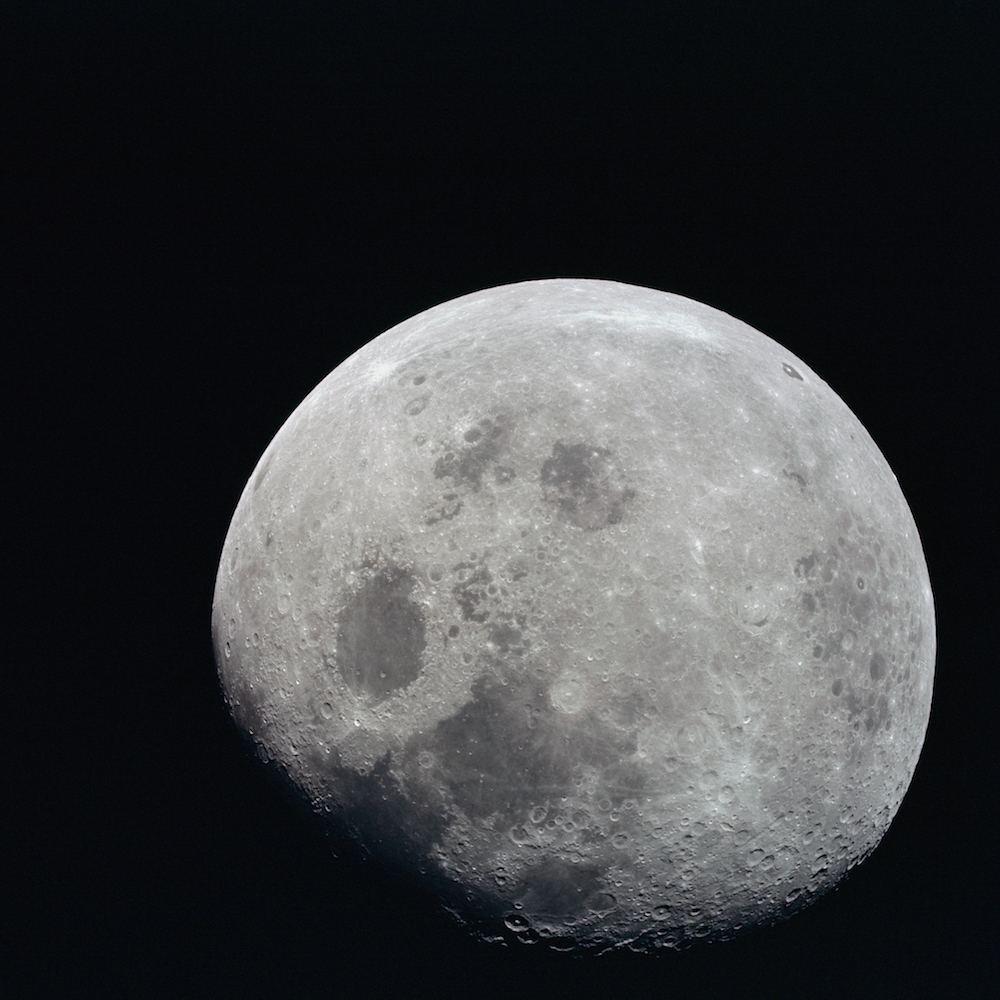
Small Companion
The Moon is about 27% the size of Earth.
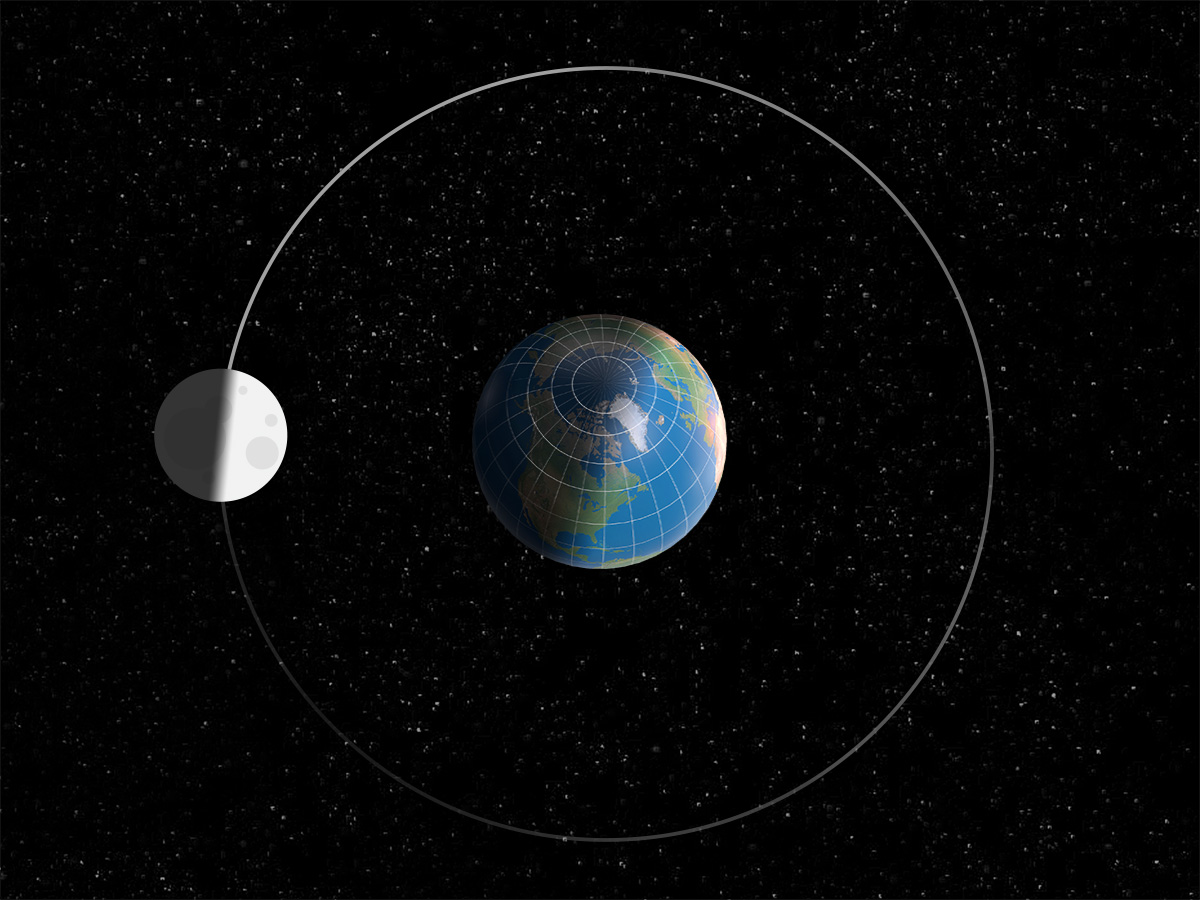
Tidally Locked
We always see the same side of the Moon.
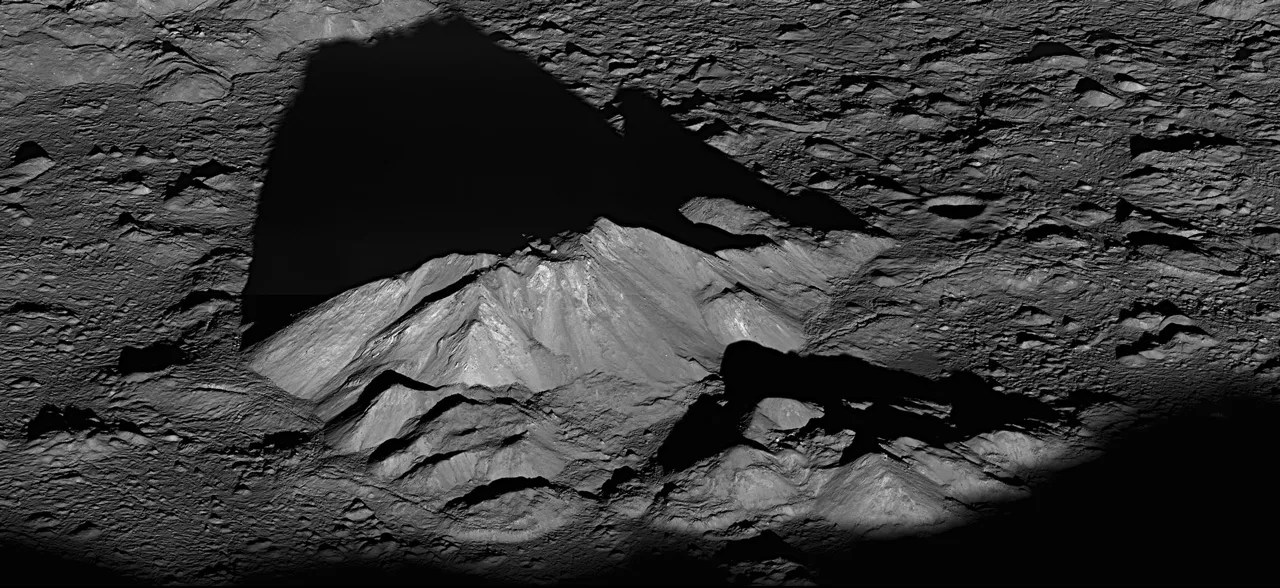
Battered Terrain
The Moon has a solid, rocky surface.
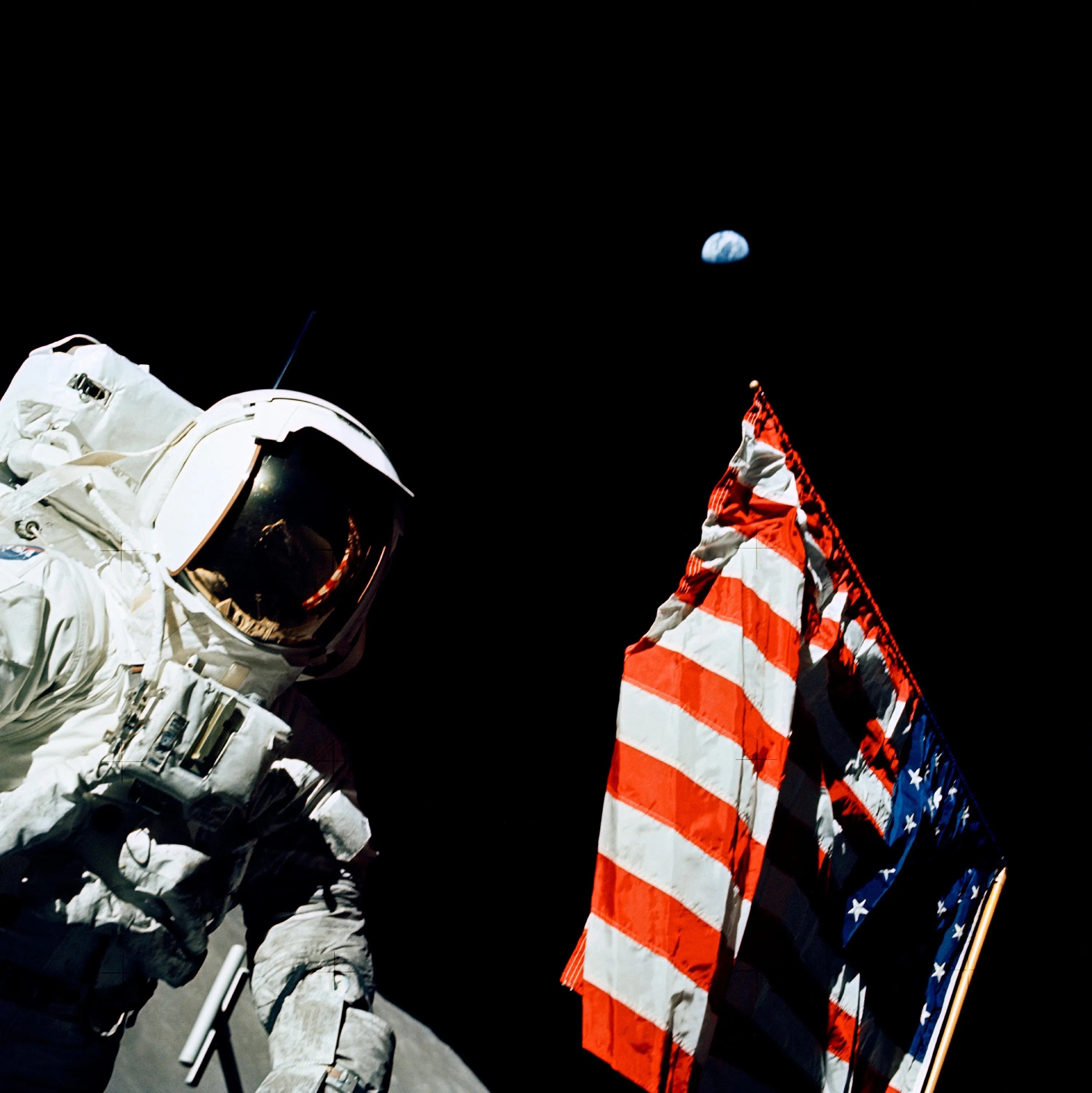
Bring a Spacesuit
There's no rain or wind, but there is weather.
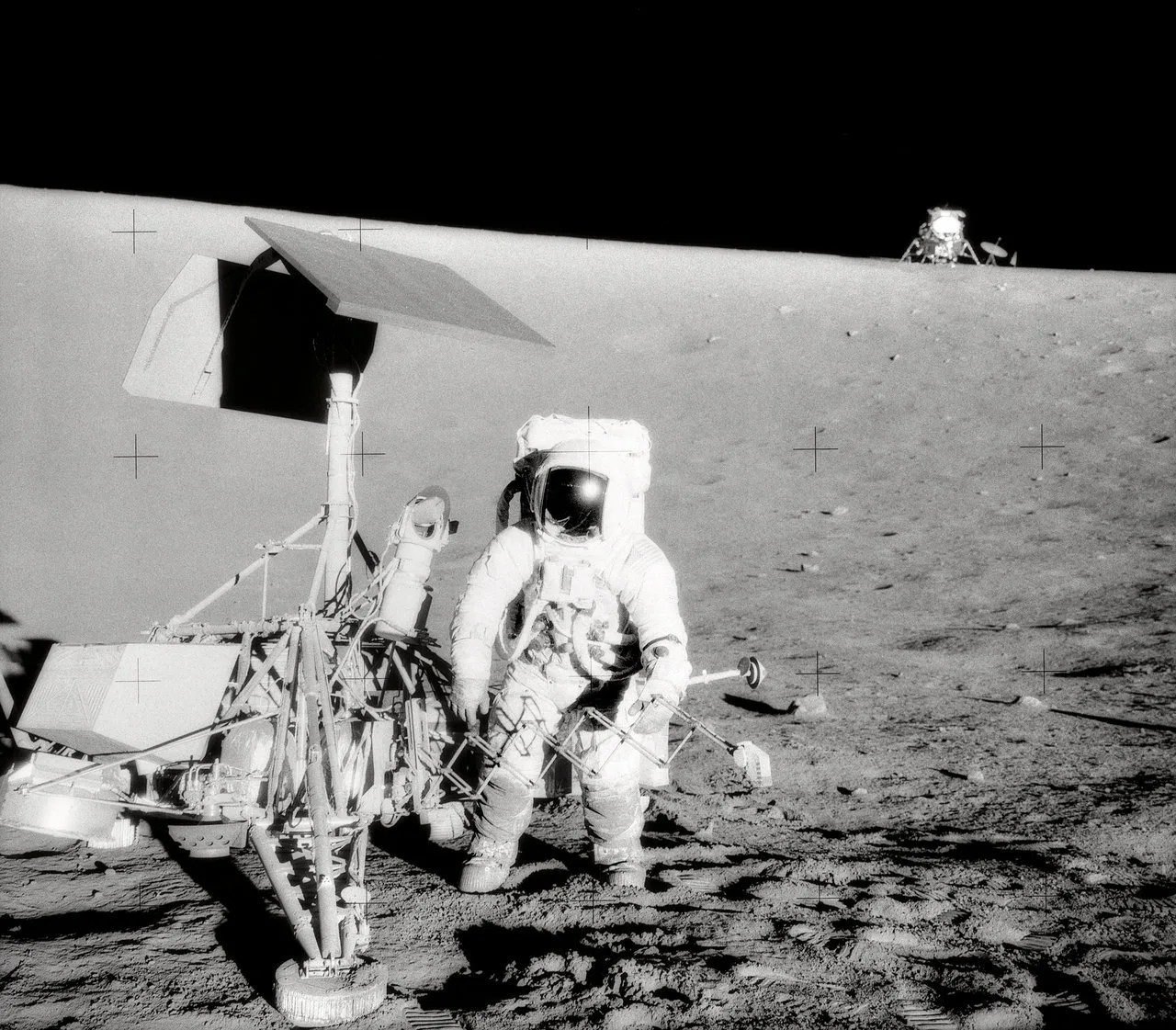
Destination Moon
24 humans and more than 100 robots visited.
Earth's Moon is the brightest and largest object in our night sky. The Moon makes Earth a more livable planet by moderating our home planet's wobble on its axis, leading to a relatively stable climate. It also causes tides, creating a rhythm that has guided humans for thousands of years.
The Moon was likely formed after a Mars-sized body collided with Earth several billion years ago.
Earth's only natural satellite is simply called "the Moon" because people didn't know other moons existed until Galileo Galilei discovered four moons orbiting Jupiter in 1610. In Latin, the Moon was called Luna, which is the main adjective for all things Moon-related: lunar.
The April 8 Total Solar Eclipse: Through the Eyes of NASA
On April 8, 2024, the Moon’s shadow swept across North America, treating millions to a breathtaking view of a total…
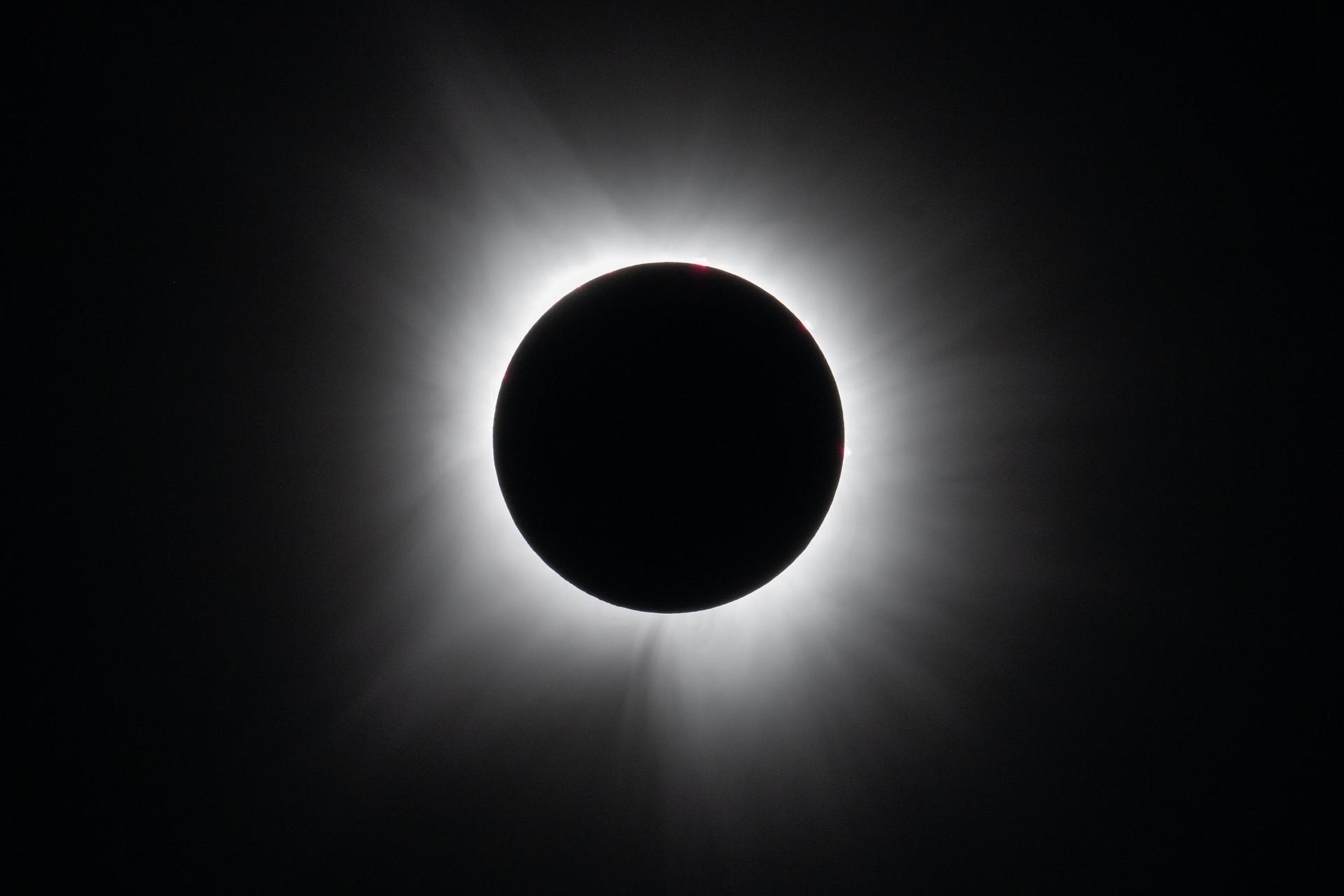
Explore the Moon
Top questions about earth's moon.
Why can I see the Moon during the day? And other frequently asked questions about our Moon.
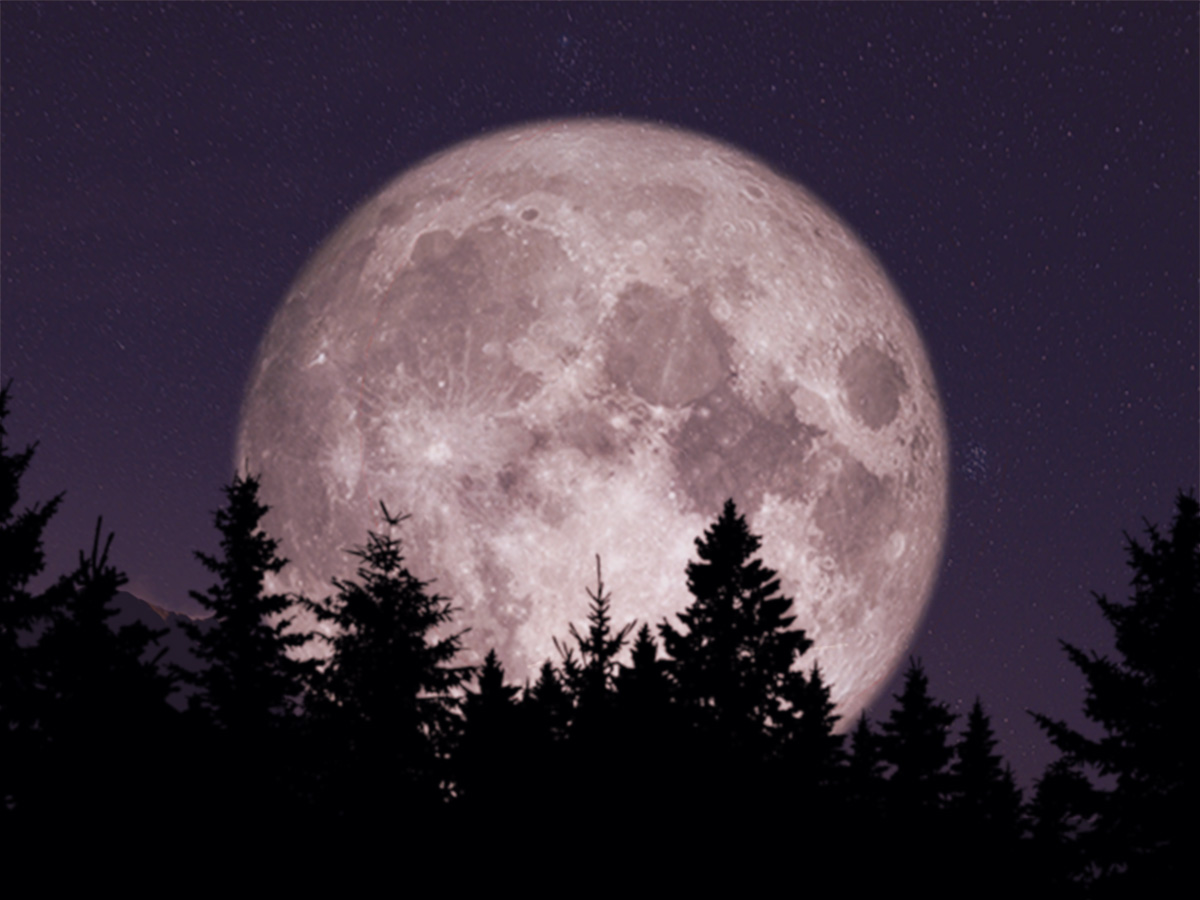
When the full moon is a little bit closer to us than usual, it appears especially large and bright in the sky.
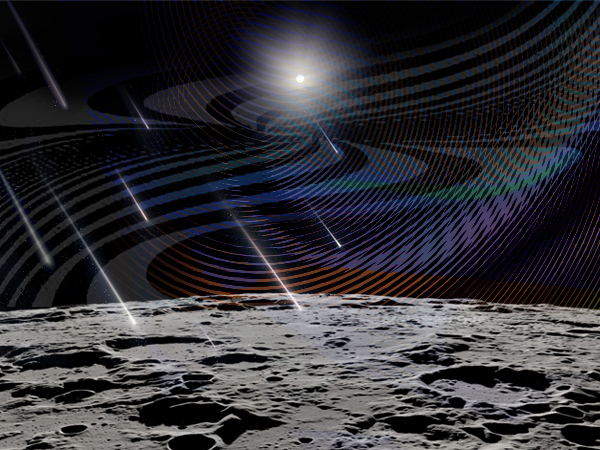
Weather on the Moon
What does “weather” mean on a world with practically no atmosphere? Explore extreme lunar surface conditions here.
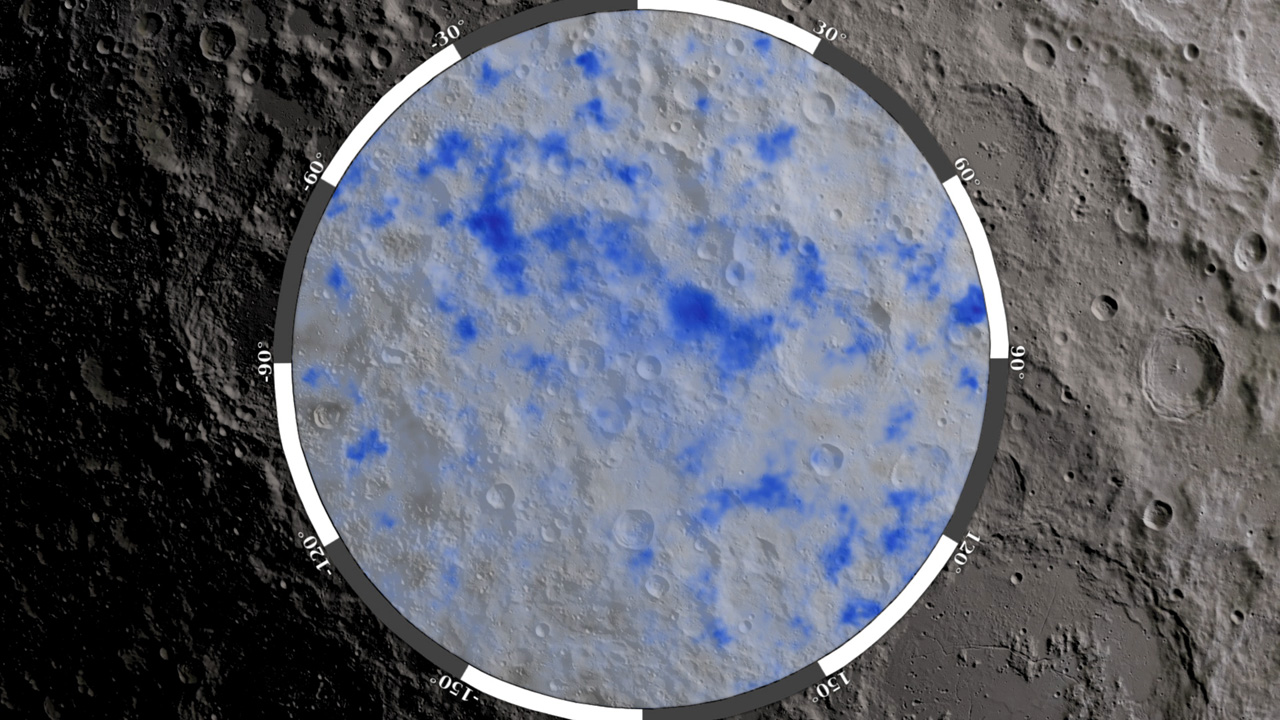
Uncovering Lunar Water
There’s water on the Moon. Follow the thread of discoveries that led up to the confirmation of its presence in 2020.
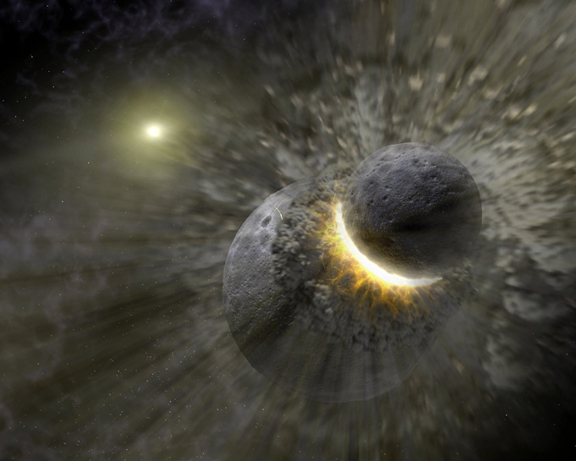

The Moon's Origin Story
Several theories vie for dominance but most agree on one thing — Earth's Moon was born from destruction.
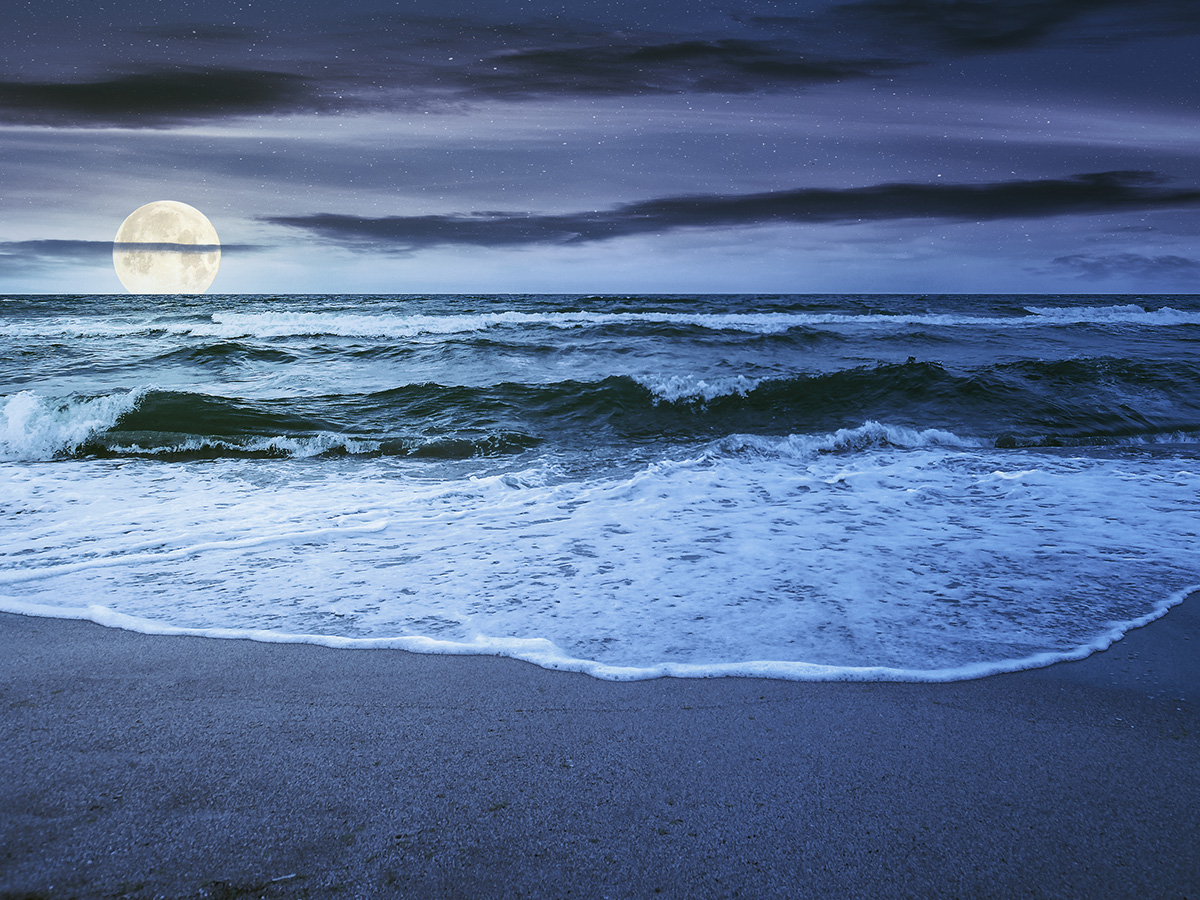
Earth and Tides
As distant as the Moon may seem, its gravitational pull on Earth plays a huge role in the formation of tides.
Observe the Moon
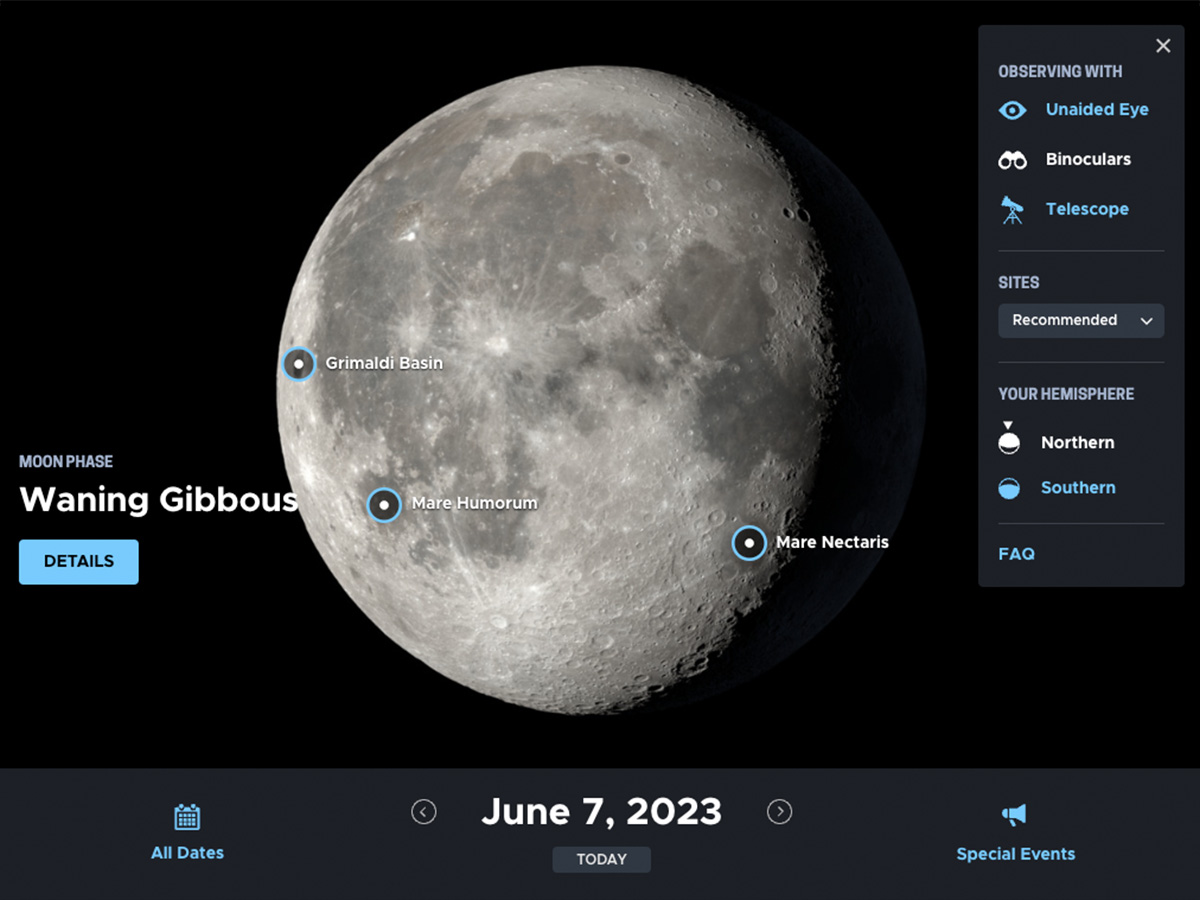
Daily Moon Guide
NASA’s interactive map for observing the Moon each day of the year.
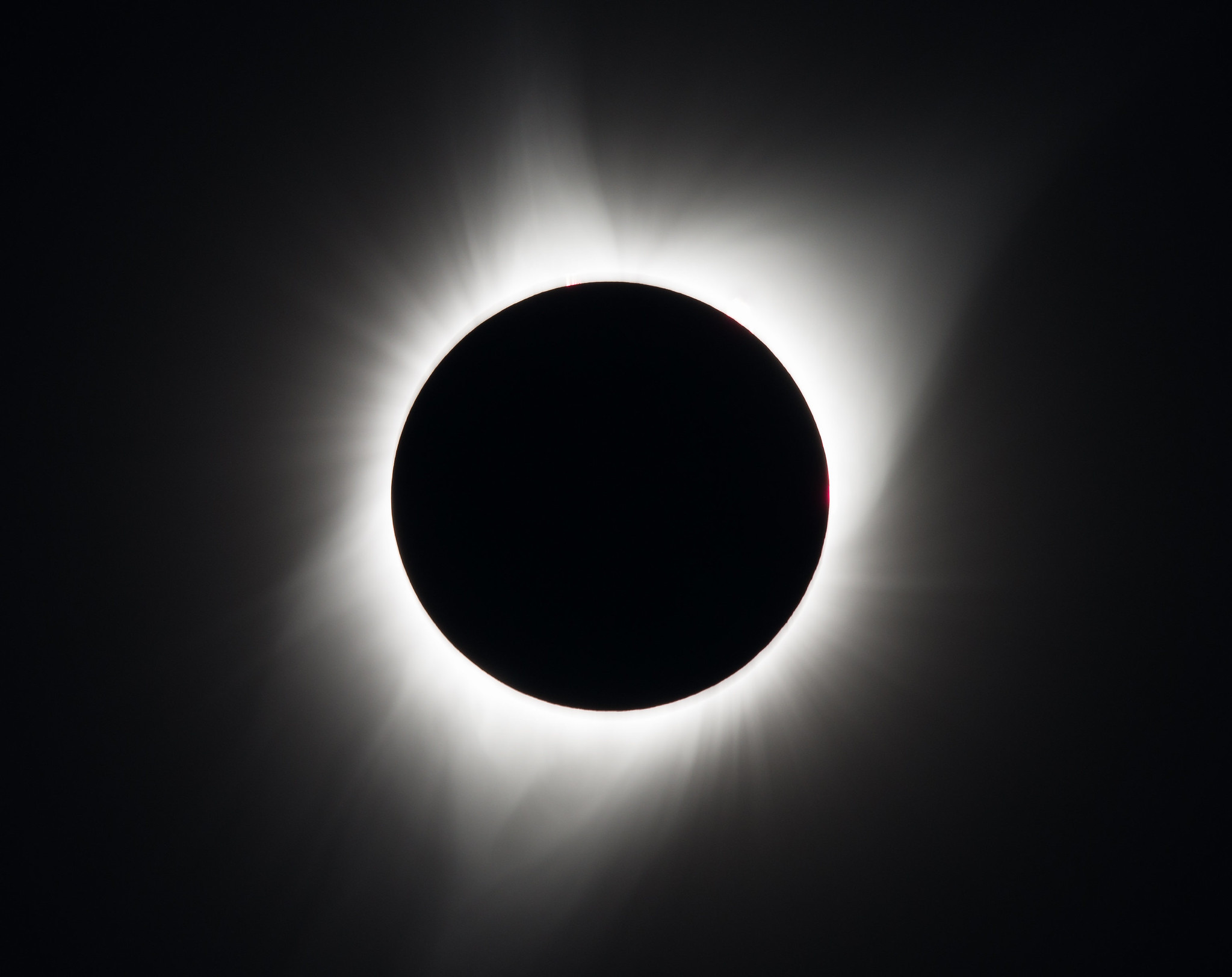
Moon Observation Journal
Begin a month of lunar observations, starting with the solar eclipse on April 8, 2024!
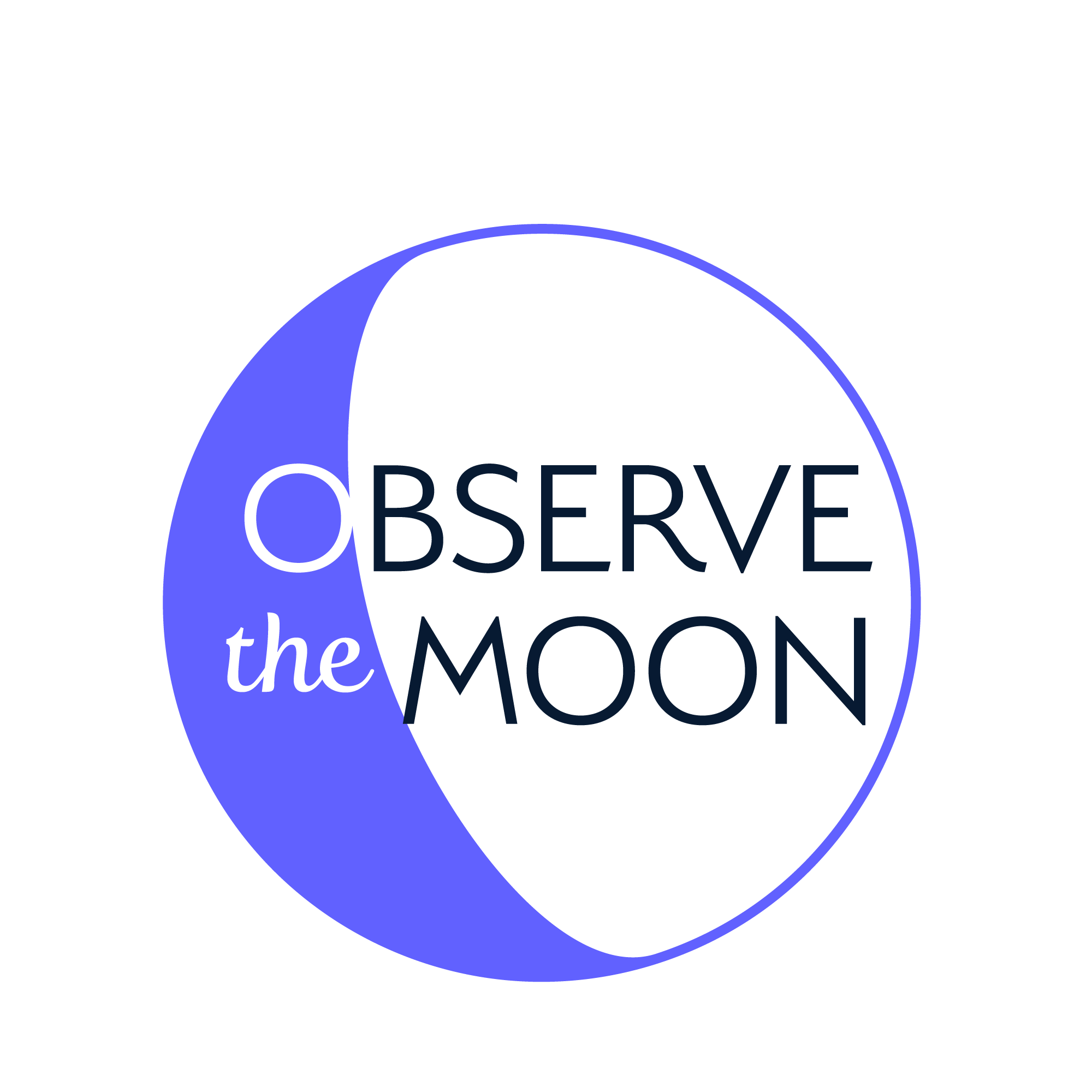
International Observe the Moon Night
On Sept 14, 2024, celebrate lunar observation, science, and exploration.
Moon Stories
Navigating the Moon with Art
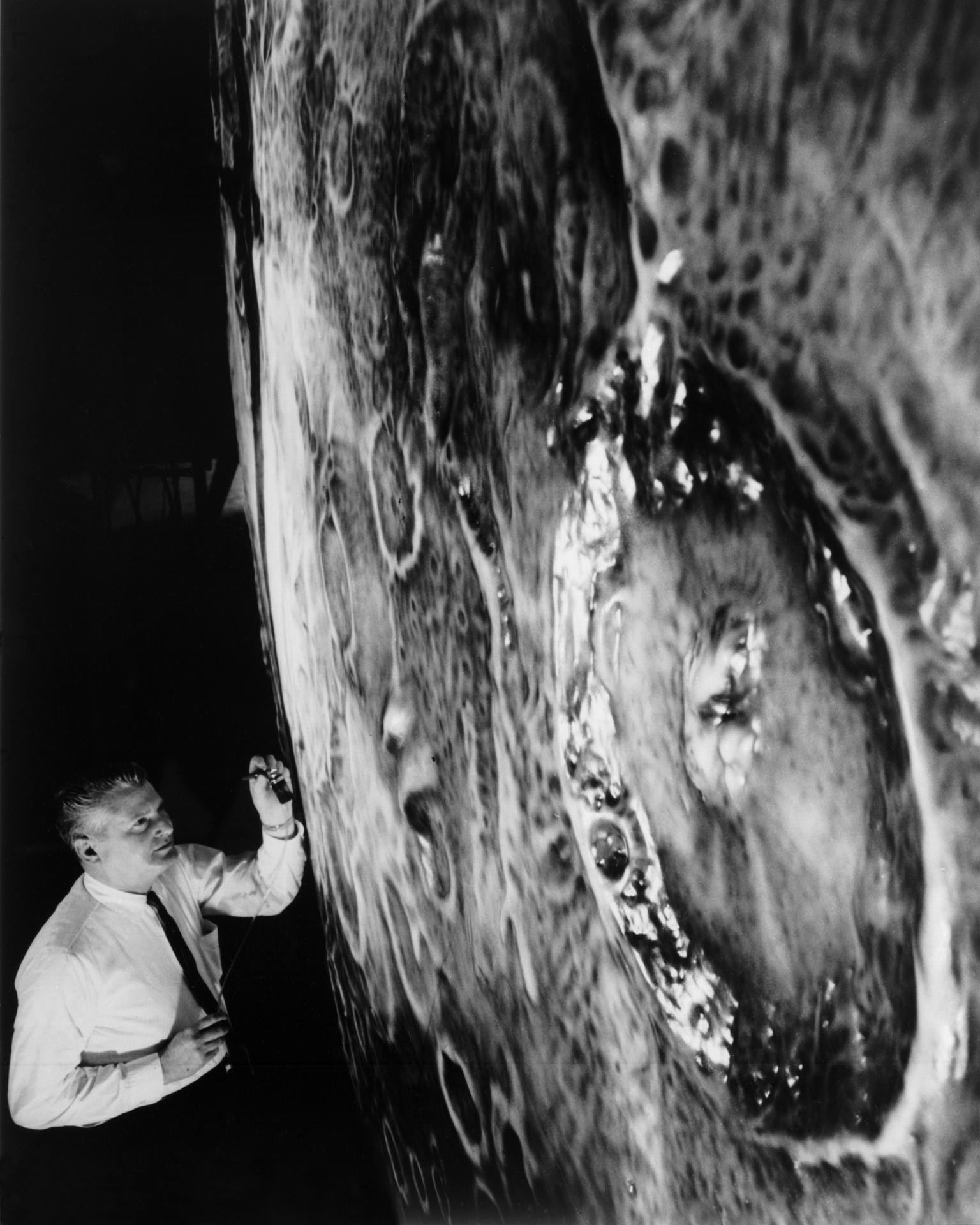
NASA Goddard to Build Quake Detector for Artemis III Moon Landing
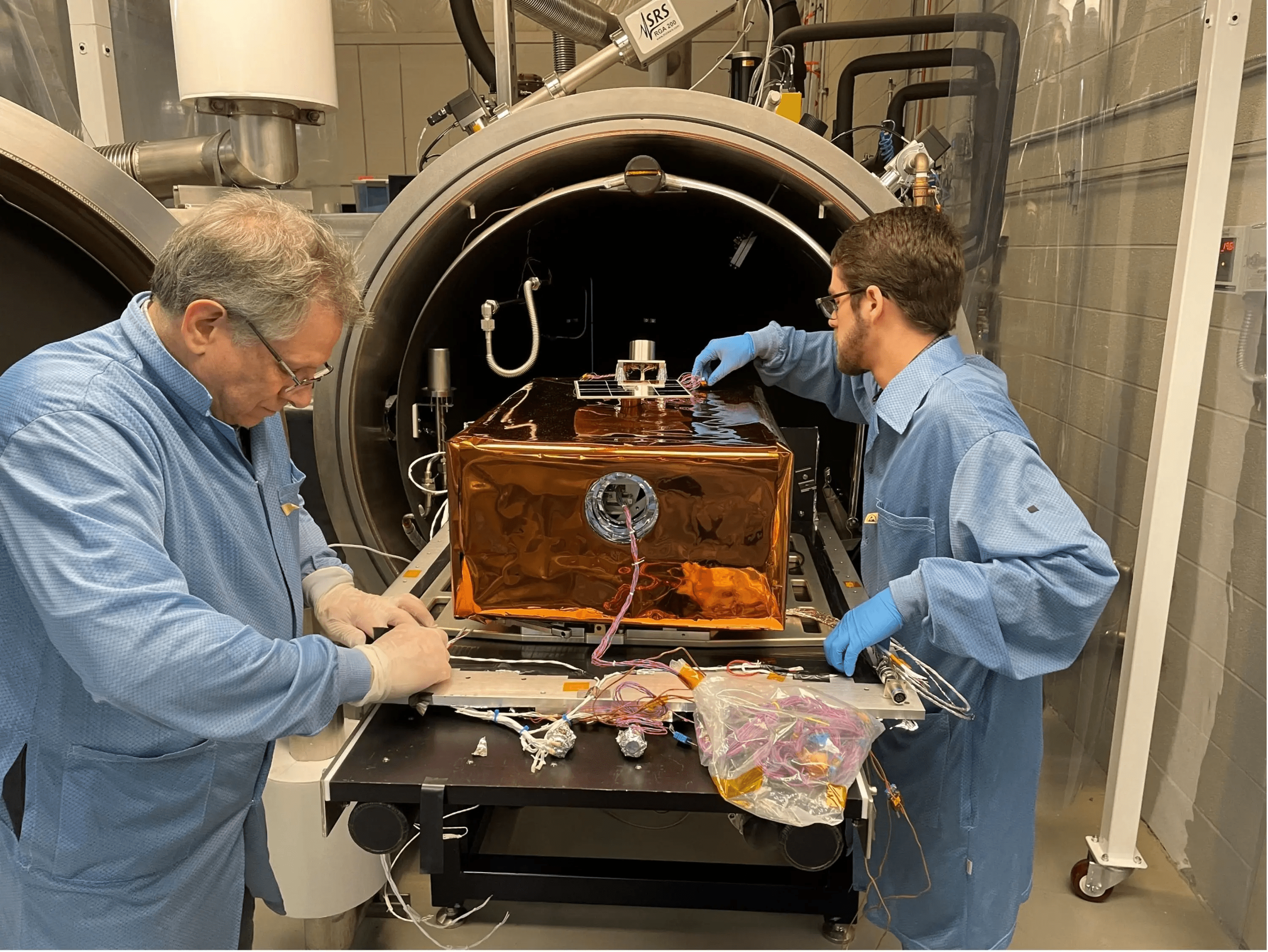
NASA’s LRO Observes 2024 Solar Eclipse Shadow

NASA’s LRO Finds Photo Op as It Zips Past SKorea’s Danuri Moon Orbiter
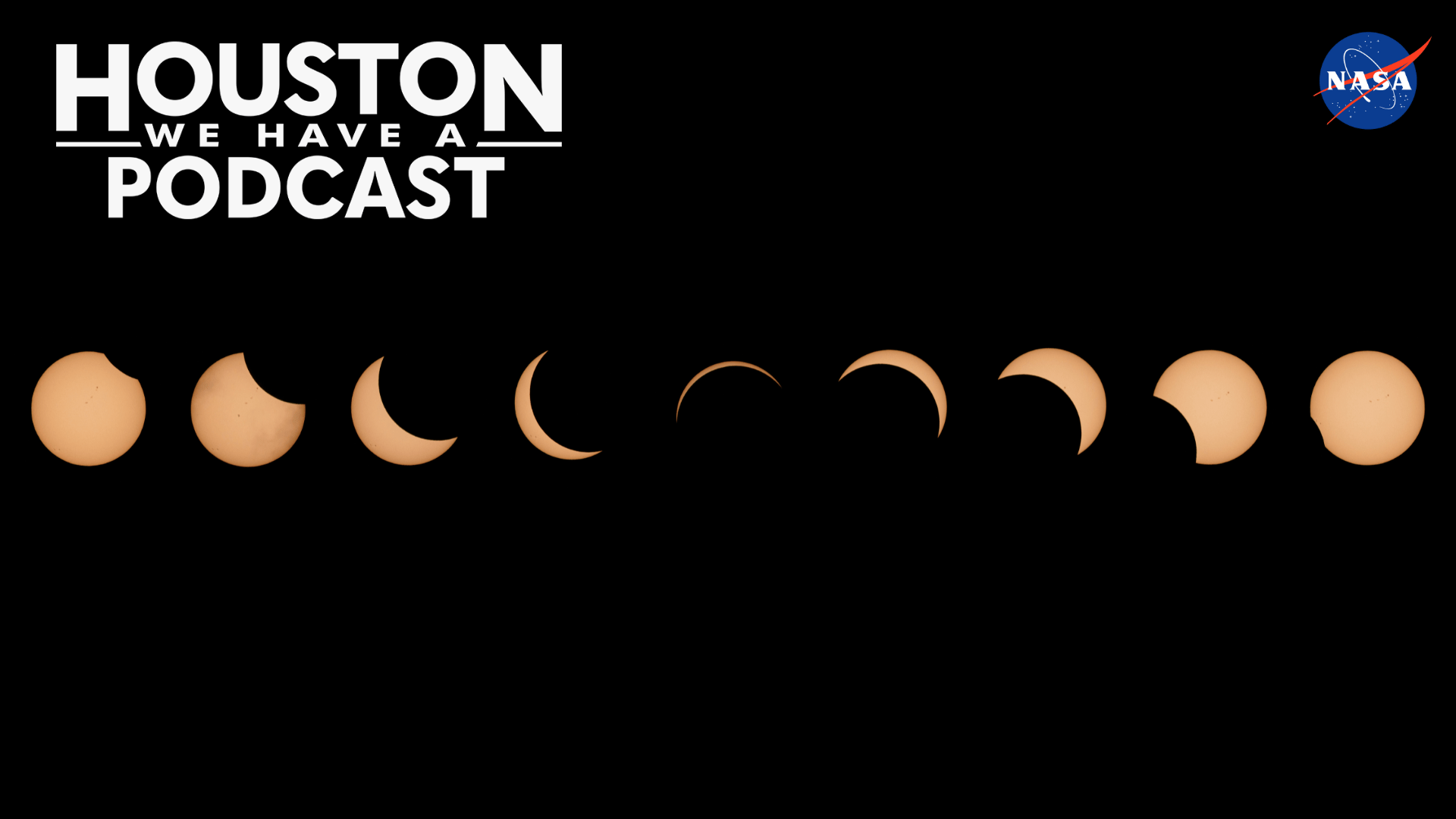
Eclipse Across North America 2024
Discover More Topics From NASA
Facts About Earth

Here are 13 nuggets of lunar knowledge
How did the moon form? Why do we always see only one side of it? Why does the lunar day last one Earth month? Scroll down for the answers—and other facts about our moon.
• How did the moon form? According to the "giant impact" theory, the young Earth had no moon. At some point in Earth's early history, a rogue planet, larger than Mars, struck the Earth in a great, glancing blow. Instantly, most of the rogue body and a sizable chunk of Earth were vaporized. The cloud rose to above 13,700 miles (22,000 kilometers) altitude, where it condensed into innumerable solid particles that orbited the Earth as they aggregated into ever larger moonlets, which eventually combined to form the moon.
• By measuring the ages of lunar rocks, we know that the moon is about 4.6 billion years old, or about the same age as Earth.
• The distance between the Earth and its moon averages about 238,900 miles (384,000 kilometers). The diameter of the moon is 2,160 miles (3,476 kilometers). The moon's mass—the amount of material that makes up the moon—is about one-eightieth of the Earth's mass.
• Because the force of gravity at the surface of an object is the result of the object's mass and size, the surface gravity of the moon is only one-sixth that of the Earth. The force gravity exerts on a person determines the person's weight. Even though your mass would be the same on Earth and the moon, if you weigh 132 pounds (60 kilograms) on Earth, you would weigh about 22 pounds (10 kilograms) on the moon.
• The rotation of the moon—the time it takes to spin once around on its own axis—takes the same amount of time as the moon takes to complete one orbit of the Earth, about 27.3 days. This means the moon's rotation is synchronized in a way that causes the moon to show the same face to the Earth at all times. One hemisphere always faces us, while the other always faces away. The lunar far side (aka the dark side) has been photographed only from spacecraft.
• The shape of the moon appears to change in a repeating cycle when viewed from the Earth because the amount of illuminated moon we see varies, depending on the moon's position in relation to the Earth and the sun. We see the full moon when the sun is directly behind us, illuminating a full hemisphere of the moon when it is directly in front of us. The new moon, when the moon is darkened, occurs when the moon is almost directly between Earth and the sun—the sun's light illuminates only the far side of the moon (the side we can't see from Earth).
• The moon orbits the Earth at an average speed of 2,300 miles an hour (3,700 kilometers an hour).
• The moon's gravitational pull on the Earth is the main cause of the rise and fall of ocean tides. The moon's gravitational pull causes two bulges of water on the Earth's oceans—one where ocean waters face the moon and the pull is strongest and one where ocean waters face away from the moon and the pull is weakest. Both bulges cause high tides. These are high tides. As the Earth rotates, the bulges move around it, one always facing the moon, the other directly opposite. The combined forces of gravity, the Earth's rotation, and other factors usually cause two high tides and two low tides each day.
Photos: Exploring the Moon

• The airless lunar surface bakes in the sun at up to 243 degrees Fahrenheit (117 degrees Celsius) for two weeks at a time (the lunar day lasts about a month). Then, for an equal period, the same spot is in the dark. The dark side cools to about -272 degrees Fahrenheit (-169 degrees Celsius).
• The rocks and soil brought back by Apollo missions are extremely dry ; the moon has no indigenous water. However, the moon is bombarded by water-laden comets and meteoroids. Most of this water is lost to space, but some is trapped in permanently shadowed areas near both poles of the moon.
• To the unaided eye, the bright lunar highlands and the dark maria (Latin for "seas") make up the "man in the moon." A telescope shows that they consist of a great variety of round impact features—scars left by objects that struck the moon long ago. The largest scars are the impact basins, ranging up to about 1,500 miles (2,500 kilometers) across. The basins were flooded with lava some time after the titanic collisions that formed them. The dark lava flows are what the eye discerns as maria.
• On the moon there are no mountains like the Himalaya, produced by one tectonic plate bumping into another. There is no continental drift on the moon. Everywhere, the moon is sheathed by rocky rubble created by constant bombardment by meteoroids, asteroids, and comets.
• No cheese has ever been found on the moon.
11 Photos of Earth's Moon

FREE BONUS ISSUE
Related topics.
- PLANETARY MOONS
- SOLAR SYSTEM
You May Also Like

4.5 billion years ago, another planet crashed into Earth. We may have found its leftovers.

9 spectacular night sky events to see in 2024

Saturn’s ‘Death Star’ moon was hiding a secret: an underground ocean

Is there a 9th planet out there? We may soon find out.

The moon is even older than we thought
- Environment
- Perpetual Planet
- History & Culture
History & Culture
- History Magazine
- Mind, Body, Wonder
- Terms of Use
- Privacy Policy
- Your US State Privacy Rights
- Children's Online Privacy Policy
- Interest-Based Ads
- About Nielsen Measurement
- Do Not Sell or Share My Personal Information
- Nat Geo Home
- Attend a Live Event
- Book a Trip
- Inspire Your Kids
- Shop Nat Geo
- Visit the D.C. Museum
- Learn About Our Impact
- Support Our Mission
- Advertise With Us
- Customer Service
- Renew Subscription
- Manage Your Subscription
- Work at Nat Geo
- Sign Up for Our Newsletters
- Contribute to Protect the Planet
Copyright © 1996-2015 National Geographic Society Copyright © 2015-2024 National Geographic Partners, LLC. All rights reserved
- International edition
- Australia edition
- Europe edition
Odysseus spacecraft lands on the moon as Nasa hails ‘giant leap forward’ – as it happened
This blog has now closed, but you can read our latest story here
- 23 Feb 2024 Closing summary
- 22 Feb 2024 Nasa and Intuitive Machines celebrate moon landing
- 22 Feb 2024 'Odysseus has taken the moon,' says Nasa
- 22 Feb 2024 The Odysseus is on the moon...
- 22 Feb 2024 Odysseus lander close to touchdown
- 22 Feb 2024 Odysseus in position to land
- 22 Feb 2024 What's on board?
- 22 Feb 2024 Odysseus will use backup Lidar instrument during descent
- 22 Feb 2024 Odysseus set for 6.24pm ET/11.24pm GMT landing
- 22 Feb 2024 Intuitive Machines' Odysseus aims to land on the moon

'Odysseus has taken the moon,' says Nasa
“What a triumph,” said Bill Nelson, Nasa’s administrator in a message following the landing.
“Odysseus has taken the moon. This feat is a giant leap forward for all of humanity.”
Today for the first time in more than a half century, the US has returned to the moon. Today for the first time in the history of humanity, a commercial company, an American company launched and led the voyage up there. And today is a day that shows the power and promise of NASA’s Commercial partnerships. Congratulations to everyone involved in this great and daring quest at Intuitive Machines, SpaceX and right here at Nasa.
Closing summary
The US returned to the moon for the first time in more than half a century, when the privately-built spacecraft called Odysseus touched down today.
Confirmation of the landing came about 10 minutes after touchdown, as flight controllers scrambled to pick up communications. “I know this was a nail-biter but we are on the surface and we are transmitting,” said Stephen Altemus, president and CEO of Intuitive Machines, the Texas-based company that designed and operated the lander. “Welcome to the moon.”
Here’s a recap of the Odysseus lander’s long journey:
Last week SpaceX’s Falcon rocket blasted off in the middle of the US night from Nasa’s Kennedy Space Center, dispatching Intuitive Machines’ lunar lander on its 230,000 miles (370,000km) journey.
The lander, a 14ft (4.3 meter) hexagon-shaped craft with six legs, was aimed towards a landing at crater Malapert A, close to the lunar south pole. Odysseus is carrying a payload of six Nasa science instruments and technology demonstrations as part of the agency’s commercial lunar payload services initiative. It’s also carrying some other stuff – including 125 of Jeff Koons’ miniature moon sculptures.
From the moon’s orbit, the lander used autonomous systems to determine the best spot to land, slowing itself down as it propelled toward the surface.
There were some unexpected glitches along the way –instead of using the primary navigation sensors as planned, the lander used a Lidar instrument provided by Nasa to guide its descent. The landing was delayed so that flight controllers could patch software.
There’s still a lot we don’t know about the circumstances of Odysseus’s landing. Flight controllers will work to analyze communications and learn more about the descent, and whether the Odysseus will be able to carry on and complete its lunar missions.
– Guardian staff
My colleague Richard Luscombe has more details here about Odysseus’s long journey:
The White House Office of Science and Technology has sent its congratulations:
Go Odysseus! We’re over the moon about the U.S.’ first lunar landing since 1972! Congrats to @Int_Machines and @NASA 's CLPS! As @POTUS says, "With science, hope, and vision, there's not a damn thing we can't do as a country." Welcome to the moon. https://t.co/J6K38We5wW — White House Office of Science & Technology Policy (@WHOSTP) February 22, 2024
Here again, is the moment the flight controllers confirmed landing.
Calling it a touchdown! "We're on the surface of the Moon and we are transmitting". pic.twitter.com/7YXS1e4I8E — Chris Bergin - NSF (@NASASpaceflight) February 22, 2024
More images are emerging of the control room staff in Torrance, California, as they anxiously monitored – and eventually celebrated – the Odysseus spacecraft’s journey from orbit to landing.
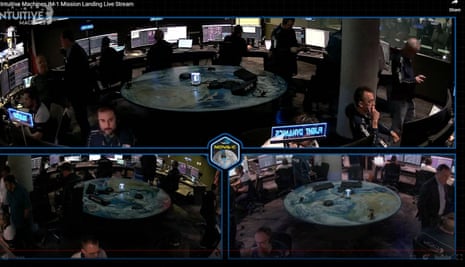
Employees of Scorpius Space Launch Company (SSLC) and their families and guests watching the landing from Torrance, California cheered as they heard news of the touchdown.
The lander used SSLC’s next-generation fuel tanks for the lunar mission.

Nasa and Intuitive Machines celebrate moon landing
Still, Nasa and Intuitive Machines will be celebrating the achievement.
Odysseus is the first American spacecraft to accomplish such a feat since 1972.
Your order was delivered… to the Moon! 📦 @Int_Machines ' uncrewed lunar lander landed at 6:23pm ET (2323 UTC), bringing NASA science to the Moon's surface. These instruments will prepare us for future human exploration of the Moon under #Artemis . pic.twitter.com/sS0poiWxrU — NASA (@NASA) February 22, 2024
The flight controllers aren’t done yet, of course. They’ll still work to glean more information, and confirm the circumstances of Odysseus’s landing, its current state, and whether it can achieve its objectives.
Flight controllers are still working on getting more information.
Nonetheless, it seems like Odysseus is the first American-built mission to land on the moon in more than a half century.
The Odysseus is on the moon...
“We are on the surface,” said Stephen Altemus, president and CEO of Intuitive Machines. “Welcome to the moon. Odysseus has a new home.”
Note: a previous version of this post incorrectly attributed the quote to mission director Tim Craine.
It is possible that the Odysseus has crashed… or that there’s a communication issue. Flight controllers are still trying to figure it out.
“We’re not dead yet,” was the call out from mission control.
We’re still standing by for confirmation. Controllers are going through the latest data that they’ve gotten from the lander. There’s possibly a communications glitch.
We’ve reached the expected time of landing… but waiting for confirmation.
The “hazard disturbance avoidance” process has begun. The lander is 1000m away from the surface.
The lander is making autonomous decisions about where to land. We’re less than a minute away.
Odysseus lander close to touchdown
The mission director just called out three minutes till touchdown.
There will likely be a slight delay between when the lander makes contact with the surface, and when we will get confirmation. That delay could be as little as 15 seconds or several minutes.
A reminder that there’s no human decisions being made about where to land. The autonomous system on the lander is scanning the surface for the best place to drop down.
The lander is feeding data to the scientists in the control room.
Everything seems on track so far, as the lander continues slowing itself down so that it can prepare for a vertical descent.
Most viewed
Want travel inspiration sent straight to your inbox?
By clicking ‘Sign Up,’ I acknowledge that I have read and agree to Hachette Book Group’s Privacy Policy and Terms of Use
Site Preferences
Sign up for our newsletter to get 15% off sitewide!
About Moon Travel Guides

Learn More About Moon Travel Guides

Here’s our story
Moon Travel Guides was founded in 1973 with a mission to advocate for independent, active, and conscious travel. We started out with guides to Asia printed by founder Bill Dalton on a Xerox machine (yes, really)—and nowadays, we’re the #1 publisher of travel guides to the Americas and have expanded our coverage globally. We’re published by Avalon Travel, a Hachette Book Group company. Our team is comprised of experienced editors, designers, cartographers, and marketers who ensure that our books are easy-to-use and reflect our brand values. Our program is simple:
Wherever we cover, we prioritize local businesses, outdoor recreation, and traveling strategically and sustainably.
We look for authentic voices: authors who share those values and are excited to share their destinations with the world. To learn more about our continued commitment to diversity and representation, head here .
Let’s talk about those authors
Moon authors are experts who have a passion for their destinations. They are culturally and politically aware, adventurous, and inspiring. They all have great stories to tell. Nearly all of them live in the destinations they write about; if they don’t, they’ve spent a significant amount of time there. Our authors experience places the same way our readers do: firsthand. This makes it possible for Moon to deliver information that’s up-to-date, reliable, and entertaining.

How do we decide what to include in a guide?
Our guidebooks cover destinations often overlooked by other publishers—like Oaxaca, the U.S. Civil Rights Trail, or the Camino de Santiago. They are designed for active, ethically minded travelers. We know that every travel publisher says they’ll guide you to the off-the-beaten-path spots, but Moon guides really will.
Moon Travel Guides are meant to read like notes from a trusted friend: Our authors let you in on their favorite places, like a secluded beach on the Amalfi Coast, a locally-loved bar in Mexico City, or a less-crowded hiking trail in Glacier National Park. All recommendations, including those for sights, activities, hotels, restaurants, and shops, are based on each author’s individual judgment, with guidance from our editors. Even when we cover famous sights, our books reveal strategies for how to have the most local experience possible.
That being said: We always do our best not to steer people toward places that are offensive, problematic, or otherwise incongruent with our values. We want to be held accountable to those standards, and we encourage your feedback.
We do not accept payment for inclusion in our travel guides, and our authors don’t accept free goods or services in exchange for positive coverage.

So, what if I have an issue with the coverage or spot an error in my guide?
Our authors do thorough, on-the-ground research when updating their guides, meaning the information you’ll find in your Moon guide is about as reliable as it gets. Inevitably, things change. In the time between research and publication, businesses might open or close, and prices can go up (or down). If you see anything that needs to be updated, clarified, or corrected, drop us a line at [email protected].
Interested in writing a Moon Travel Guide?
Great! You can read more about what it’s like to be a Moon author here , and more about our acquisition strategy here .
Featured Content
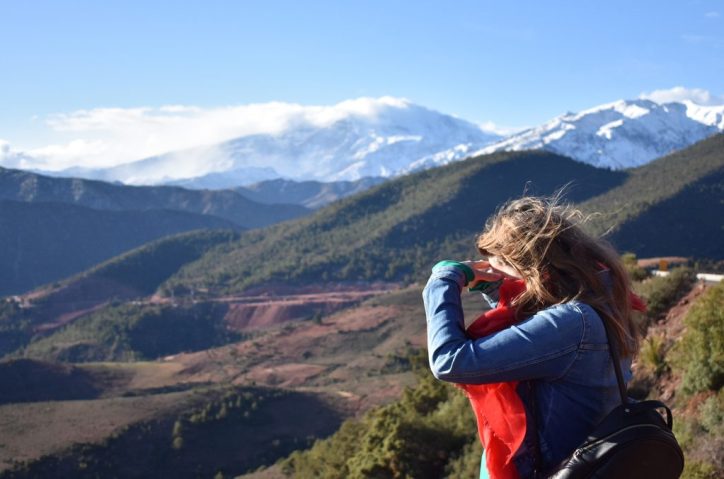
10 Best Long-Distance Hikes in the World

What is the U.S. Civil Rights Trail?
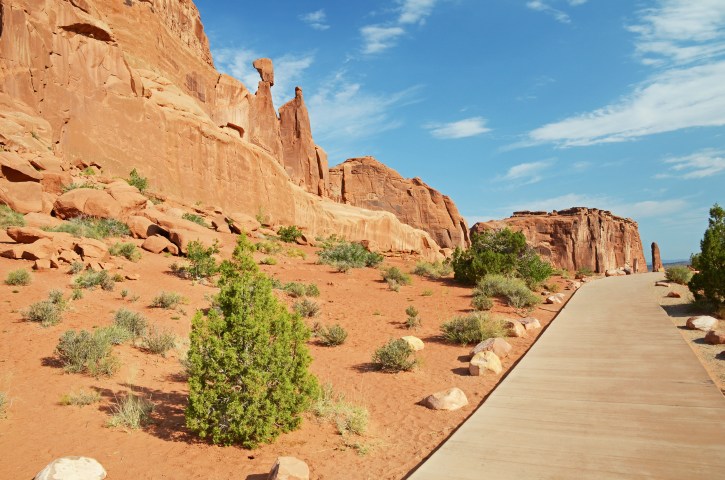
Accessibility in National Parks

Japan’s Best Temples and Shrines

12 Reasons to Walk the Camino de Santiago
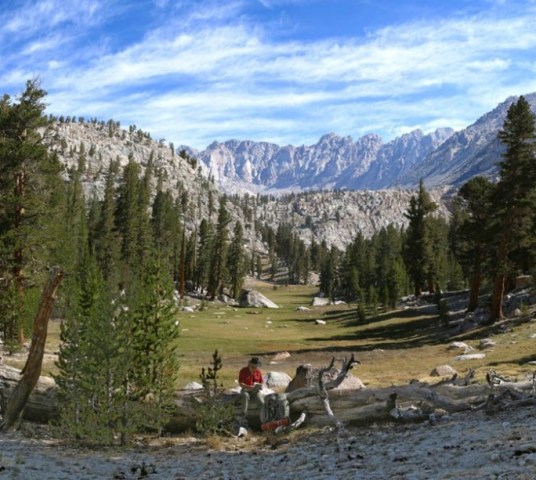
Hiking the PCT: Best Trail Sections

17 Ways to Escape the Crowds in Europe
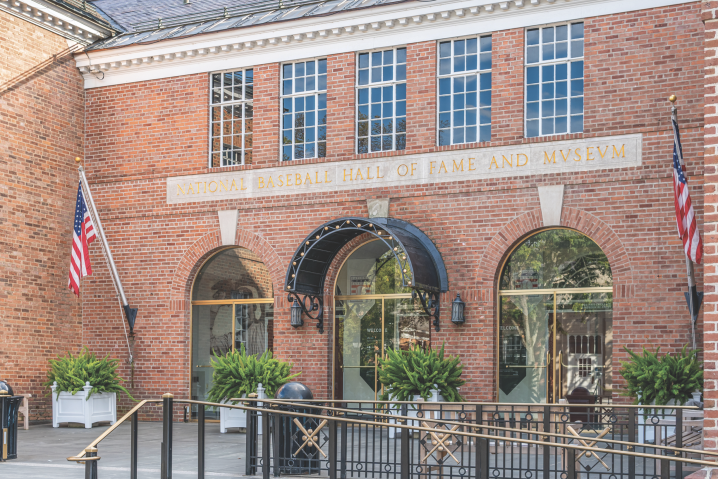
The Top 12 Attractions on a Baseball Road Trip
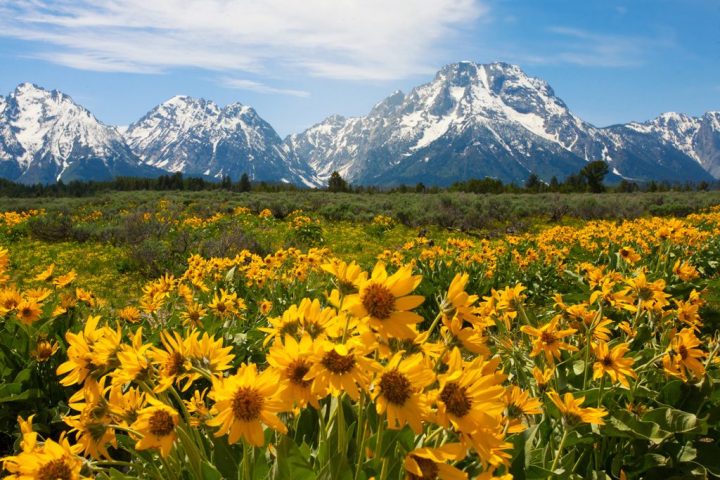
Where to See Wildflowers in National Parks
We earn a commission for products purchased through some links in this article.
Rebel Moon 2 ending explained: What happened to Princess Issa?
"To find her and to fight."

Rebel Moon 2 ending spoilers follow.
It's time for war in Rebel Moon – Part Two: The Scargiver as Kora and the rebels take on the might of the Motherworld.
The sequel delves into the backstories of each of the rebels, but it's mostly an extended battle sequence as the rebels fight alongside the villagers of Veldt to defeat Admiral Noble and his Imperium forces.
It also resolves a mystery from the first movie about what happened with Kora and Princess Issa, the child she failed to protect, leading to her desertion from the Motherworld.
Well, we say it resolves it, but Rebel Moon 2 's ending then throws a curveball with a major revelation about Princess Issa. So if you're wondering what that's all about, let's dig into the events of Rebel Moon 2 .
Major spoilers ahead.

Who dies in Rebel Moon 2?
Before we get to the Princess Issa revelation, Rebel Moon 2 doesn't end well for everybody as there are major casualties along the way.
Once the battle starts on Veldt, Nemesis is tasked with protecting the women and children in the longhouse. She does a pretty sterling job of it too, saving them all, but at the cost of her own life when she's fatally stabbed by an Imperium soldier.
While most of the rebels are fighting on Veldt, Kora and Gunnar sneak on board Noble's ship, the King's Gaze, using Kora's old drop ship from her Imperium days. The intention is to get Noble to blow it up himself by setting charges on its world-destroying weapon, and he duly obliges when he orders Cassius to blow up Veldt.
As the King's Gaze explodes around them, Kora and Gunnar face off with Noble in a final battle. They manage to kill him, making sure this time by chopping off his head, but it's at a cost as Gunnar is fatally shot.
Kora safely gets them off the King's Gaze before it crash-lands on Veldt using one of the drop ships. At the same time, Devra Bloodaxe and her army arrive on Veldt to destroy what remains of the Motherworld's forces in revenge for her brother's death in the first movie.
However, the moment of victory is bittersweet for Kora as Gunnar passes away in her arms.

The final scene of Rebel Moon 2 sees the villagers of Veldt pay tribute to those they've lost, which includes the likes of Den who fell in a brave attempt to kill Noble early in the battle.
They also give their thanks to the rebels for coming together to save the village, but Kora doesn't believe she deserves it because of what she did to Princess Issa.
Earlier in the movie, Kora told Gunnar the story of how the royal family were killed. It came during a dedication ceremony on a new ship, intended to be the final dreadnought that would usher in a new era of peace for the realm.
Kora was there as the personal guardian to Princess Issa, but it was all a trap arranged by Kora's adopted father Balisarius. He killed the King and got his soldiers to kill the Queen, although he forced Kora to kill Princess Issa.
She did as she was told, shooting Princess Issa in the heart, only for Balisarius to then frame Kora for the slaughter of the royal family. She managed to escape, but that's why she's called the Scargiver by Noble .
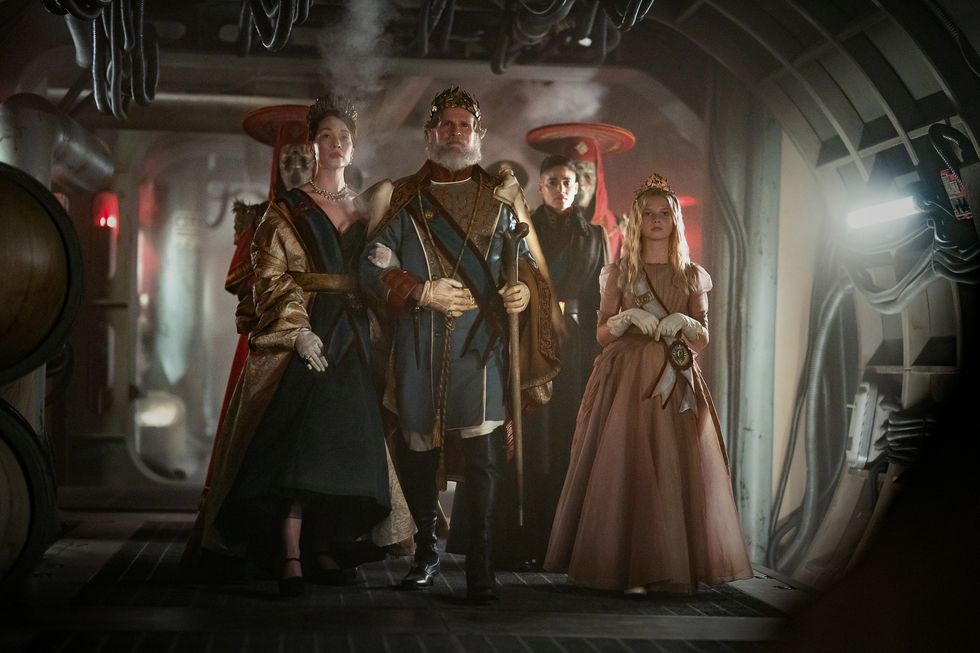
"On the story level, for the longest time, I didn't know how I was going to play somebody who did what Kora did – the horror of which we learn in a flashback," Sofia Boutella explained in the production notes.
"I didn't know how somebody who committed something like that could be granted redemption and compassion. How could I play Kora if I couldn't forgive her? It was something that was on my mind for a very long time.
"But I talked about it with Zack [Snyder] a lot, and at some point, after spending all this time with my character, I found her colours and began to understand how she was brainwashed by Balisarius, how she always believed what he was saying was the truth, and she could not disappoint him.
"If he said to do something, she had to obey. And then I finally began to forgive her. I can never fully understand this aspect of her, but it's what I had to do to play her."

Kora hadn't told the other rebels about this dark chapter in her life before the big battle. She was about to confess to Titus, in fact, when he stopped her in her tracks.
He always knew about what happened to Princess Issa and he has a revelation for Kora – Princess Issa isn't really dead. Titus told Kora that she wasn't that easy to kill, and no other explanation is given.
The rebels now have a new mission: to find Princess Issa and to continue fighting back against the Motherworld.
In the first movie, we were told that Princess Issa was prophesised to bring about the end of all wars. She also had the power to give life, which could reveal how she survived if she was able to use it on herself.
Whether that's the case or that Kora just had bad aim, we'll find out if we get another Rebel Moon movie . But it's easy to see why it'd be a handy power to have on your side.
At the end of Rebel Moon 2 , Kora, Titus, Tarak, Milius and the villagers of Veldt are all united in one mission: "To find her and to fight."
Rebel Moon – Part Two: The Scargiver is out now on Netflix.

Audible, 3 months for 99p

Watch the Fallout TV show for free

Buy Alison Hammond's outfits

How to watch Dune: Part 2 at home right now

Best refurbished phones you can buy in 2024
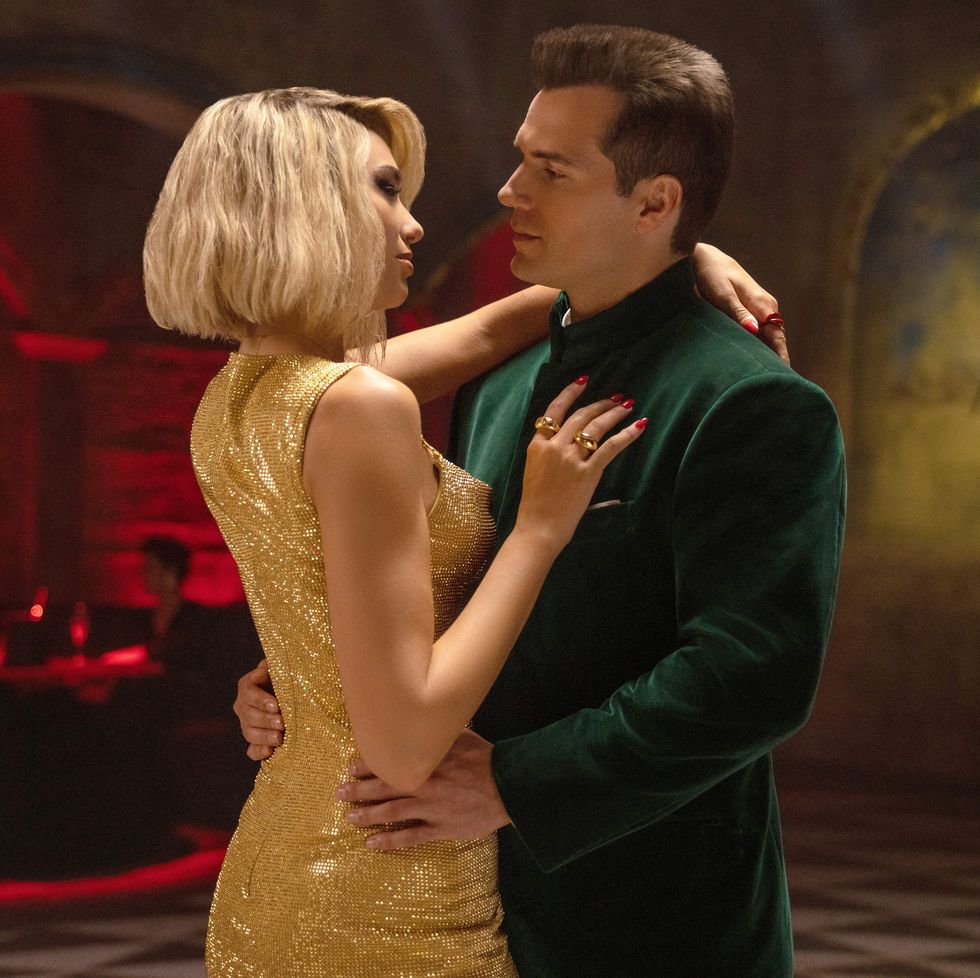
Apple TV+ 7-day free trial

Sign up for Disney+

PS5 Slim Consoles

Buy Cat Deeley's This Morning outfits

Crunchyroll 14-day free trial

Bluey-themed family dinners launch at Gousto

Shop Sky TV, broadband and mobile
Movies Editor, Digital Spy Ian has more than 10 years of movies journalism experience as a writer and editor. Starting out as an intern at trade bible Screen International, he was promoted to report and analyse UK box-office results, as well as carving his own niche with horror movies , attending genre festivals around the world. After moving to Digital Spy , initially as a TV writer, he was nominated for New Digital Talent of the Year at the PPA Digital Awards. He became Movies Editor in 2019, in which role he has interviewed 100s of stars, including Chris Hemsworth, Florence Pugh, Keanu Reeves, Idris Elba and Olivia Colman, become a human encyclopedia for Marvel and appeared as an expert guest on BBC News and on-stage at MCM Comic-Con. Where he can, he continues to push his horror agenda – whether his editor likes it or not.
.css-15yqwdi:before{top:0;width:100%;height:0.25rem;content:'';position:absolute;background-image:linear-gradient(to right,#51B3E0,#51B3E0 2.5rem,#E5ADAE 2.5rem,#E5ADAE 5rem,#E5E54F 5rem,#E5E54F 7.5rem,black 7.5rem,black);} Netflix Movies
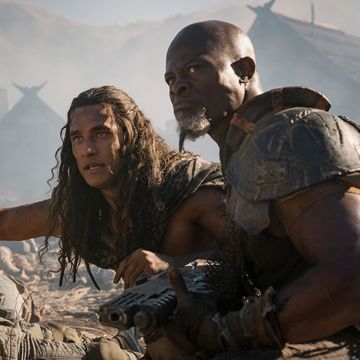
When will The Old Guard 2 be released on Netflix?

Run Rabbit Run explained on Netflix

What is the biggest Netflix movie ever?

Zack Snyder explains Rebel Moon 2 sad twist
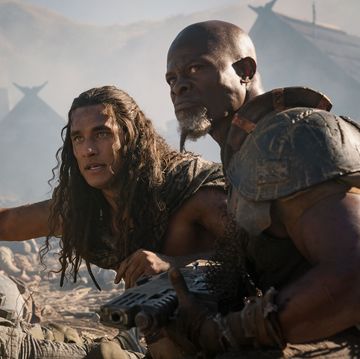
Has Rebel Moon Part 3 been confirmed?

13 best sex movies on Netflix
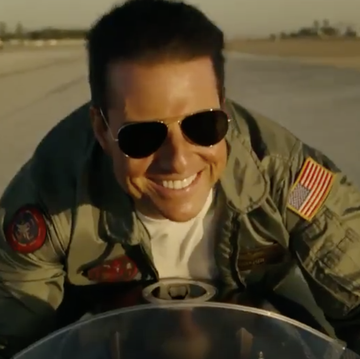
Best movies on Netflix to watch now

Will 365 Days 4 happen on Netflix?

Rebel Moon – Part Two: The Scargiver review

Leave the World Behind ending explained

Rebel Moon 2 first reactions land ahead of release

IMAGES
COMMENTS
A Moon landing or lunar landing is the arrival of a spacecraft on the surface of the Moon, including both crewed and robotic missions. ... As of July 2022, it has survived more than 1000 days on the lunar surface and is still driving with cumulative travel distance of over 1200 meters.
Moon. The Moon is the Earth's solitary natural satellite, roughly 384,000 km (239,000 mi) away. It has roughly 38,000,000 km 2 (15,000,000 sq mi) of surface area, and is not believed to harbor any life. The Moon is the only natural object in space outside the Earth that humans have landed on, but manned missions to the Moon ended in 1972.
The Artemis missions will build a community on the Moon, driving a new lunar economy and inspiring a new generation. Narrator Drew Barrymore and NASA team members explain why returning to the Moon is the natural next step in human exploration, and how the lessons learned from Artemis will pave the way to Mars and beyond. Artemis News.
Timeline of the 1969 Moon Landing. At 9:32 a.m. EDT on July 16, with the world watching, Apollo 11 took off from Kennedy Space Center with astronauts Neil Armstrong, Buzz Aldrin and Michael ...
The Space Age arrives: Robots to the Moon. With the shocking launch of Sputnik 1 in October 1957, the Moon changed from a distant silver disk in the sky to a real place, a probable destination for probes and people. The Soviets struck first, flying Luna 1 by the Moon in January 1959.
NASA TV. NASA has selected the four astronauts that will travel to the Moon during the upcoming Artemis 2 mission, which will be humanity's first crewed return to the Moon in more than 50 years ...
The Moon was likely formed after a Mars-sized body collided with Earth several billion years ago. Earth's only natural satellite is simply called "the Moon" because people didn't know other moons existed until Galileo Galilei discovered four moons orbiting Jupiter in 1610. In Latin, the Moon was called Luna, which is the main adjective for […]
Neil Armstrong on the Moon, July 1969. On July 16, 1969, Armstrong, along with Edwin E. Aldrin, Jr., and Michael Collins, blasted off in the Apollo 11 vehicle toward the Moon ( see Apollo program ). Four days later, at 4:17 pm U.S. Eastern Daylight Time (EDT), the Eagle lunar landing module, guided manually by Armstrong, touched down on a plain ...
All About the Moon. Quick Facts: Earth has just one moon - a rocky, cratered place, roughly a quarter the size of Earth and an average of 238,855 miles away. The Moon can be seen with the naked eye most nights as it traces its 27-day orbit around our planet. Credit: NASA/JPL-Caltech.
Earth's Moon is the brightest and largest object in our night sky. The Moon makes Earth a more livable planet by moderating our home planet's wobble on its axis, leading to a relatively stable climate. It also causes tides, creating a rhythm that has guided humans for thousands of years.
The Moon is Earth 's only natural satellite. We usually see it in the night sky and also during the day. Some other planets also have moons or natural satellites. Our moon is about one-fourth of the width of the Earth. [8] Because it is far away it looks small, about half a degree wide. The gravity on the moon is one-sixth of the Earth's ...
List of people who have walked on the Moon. Twelve people have walked on Earth's Moon. The first one was Neil Armstrong and the last one was Harrison Schmitt. All crewed moon landings took place between July 1969 and December 1972 as part of the United States Apollo program. All twelve people who have walked on the Moon are American men.
The diameter of the moon is 2,160 miles (3,476 kilometers). The moon's mass—the amount of material that makes up the moon—is about one-eightieth of the Earth's mass. • Because the force of ...
Today for the first time in more than a half century, the US has returned to the moon. Today for the first time in the history of humanity, a commercial company, an American company launched and ...
Here's our story. Moon Travel Guides was founded in 1973 with a mission to advocate for independent, active, and conscious travel. We started out with guides to Asia printed by founder Bill Dalton on a Xerox machine (yes, really)—and nowadays, we're the #1 publisher of travel guides to the Americas and have expanded our coverage globally.
The orbit changes over the course of the year so the distance from the Moon to Earth roughly ranges from 357,000 km to 407,000 km, giving velocities ranging from 1.100 to 0.966 km/s. Lunar Atmosphere Diurnal temperature range (equator): 95 K to 390 K (~ -290 F to +240 F) ...
The Moon is Earth's only natural satellite.It orbits at an average distance of 384,400 km (238,900 mi), about 30 times the diameter of Earth. Over time Earth's gravity has caused tidal locking, causing the same side of the Moon to always face Earth. Because of this, the lunar day and the lunar month are the same length, at 29.5 Earth days. The Moon's gravitational pull - and to a lesser ...
In layman's terms, we need a reliable "lunar time" earth-syncing system because lower gravity on the moon causes time to move slightly faster there than on Earth - by just 58.7 ...
Rebel Moon - Part Two: The Scargiver is out now on Netflix. Audible, 3 months for 99p. Find out more. Credit: Audible. Watch the Fallout TV show for free. Find out more. Credit: Amazon Prime Video.
Heads up, sky watchers: This month's full pink moon will grace the sky from Monday to Thursday, reaching peak illumination on Tuesday, April 23, at 7:49 p.m. EST. April's full moon is the second ...
India is one of the world's top spacefaring nations. It is the first Asian country to reach Mars orbit, and the fourth on the planet to take a spacecraft to the moon, landing closer to the south ...
A Trip to the Moon (French: Le voyage dans la lune) is a 1902 French science-fiction adventure trick film directed by Georges Méliès.Inspired by Jules Verne's 1865 novel From the Earth to the Moon and its 1870 sequel Around the Moon, the film follows a group of astronomers who travel to the moon in a cannon-propelled capsule, explore the moon's surface, escape from an underground group of ...
Mission to Mars was an attraction located in Tomorrowland at Disneyland and at Walt Disney World's Magic Kingdom.It originally opened as Rocket to the Moon at Disneyland in 1955, and as Flight to the Moon in Walt Disney World on Christmas Eve 1971, before it was retooled to the Mars version in 1975. It then closed down in 1992 and 1993, respectively. The attraction simulated taking guests on a ...